Day 10 - Walking The Nakasendō, Japan - old station towns, and thoughts that crossed my mind
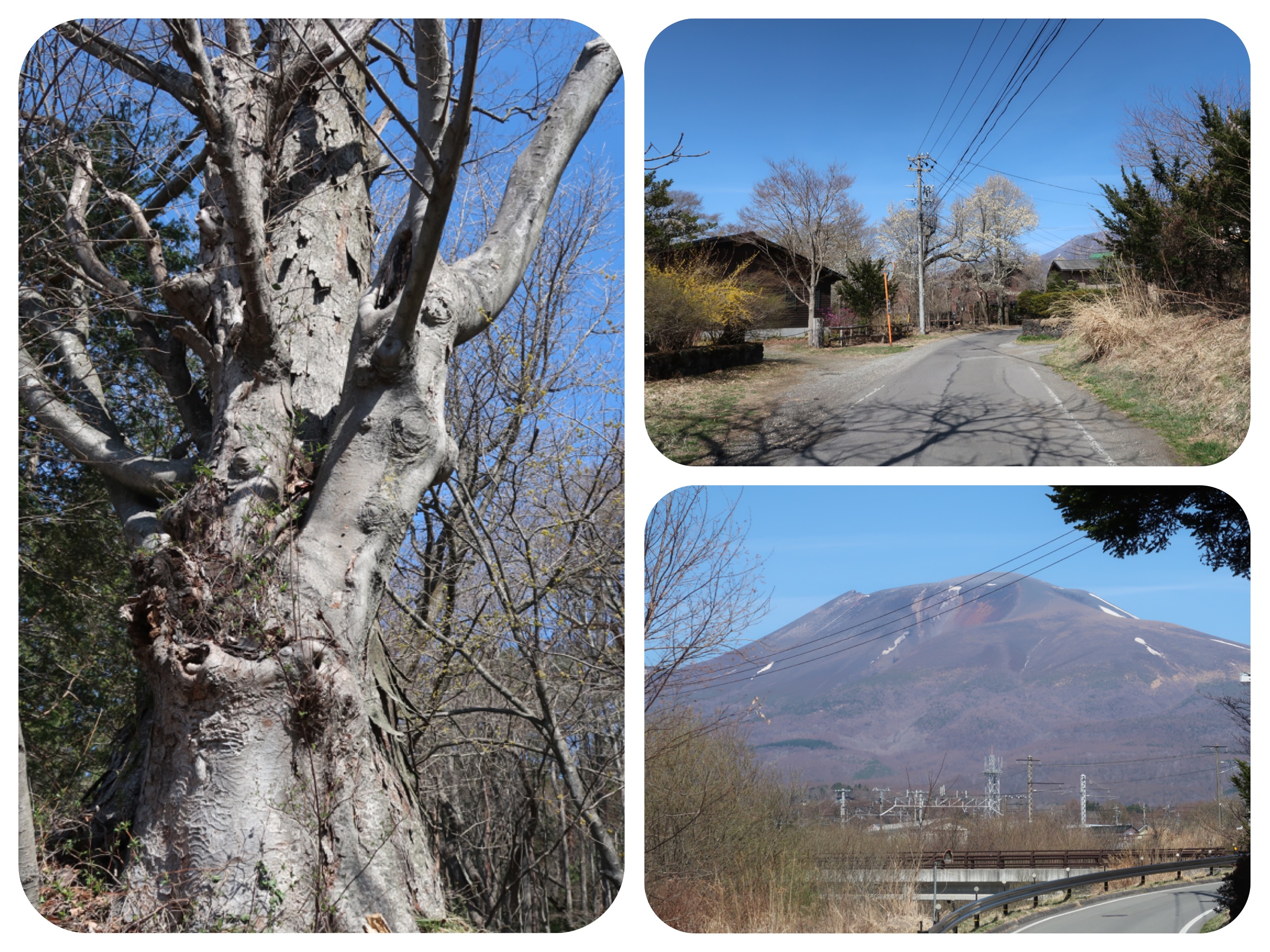
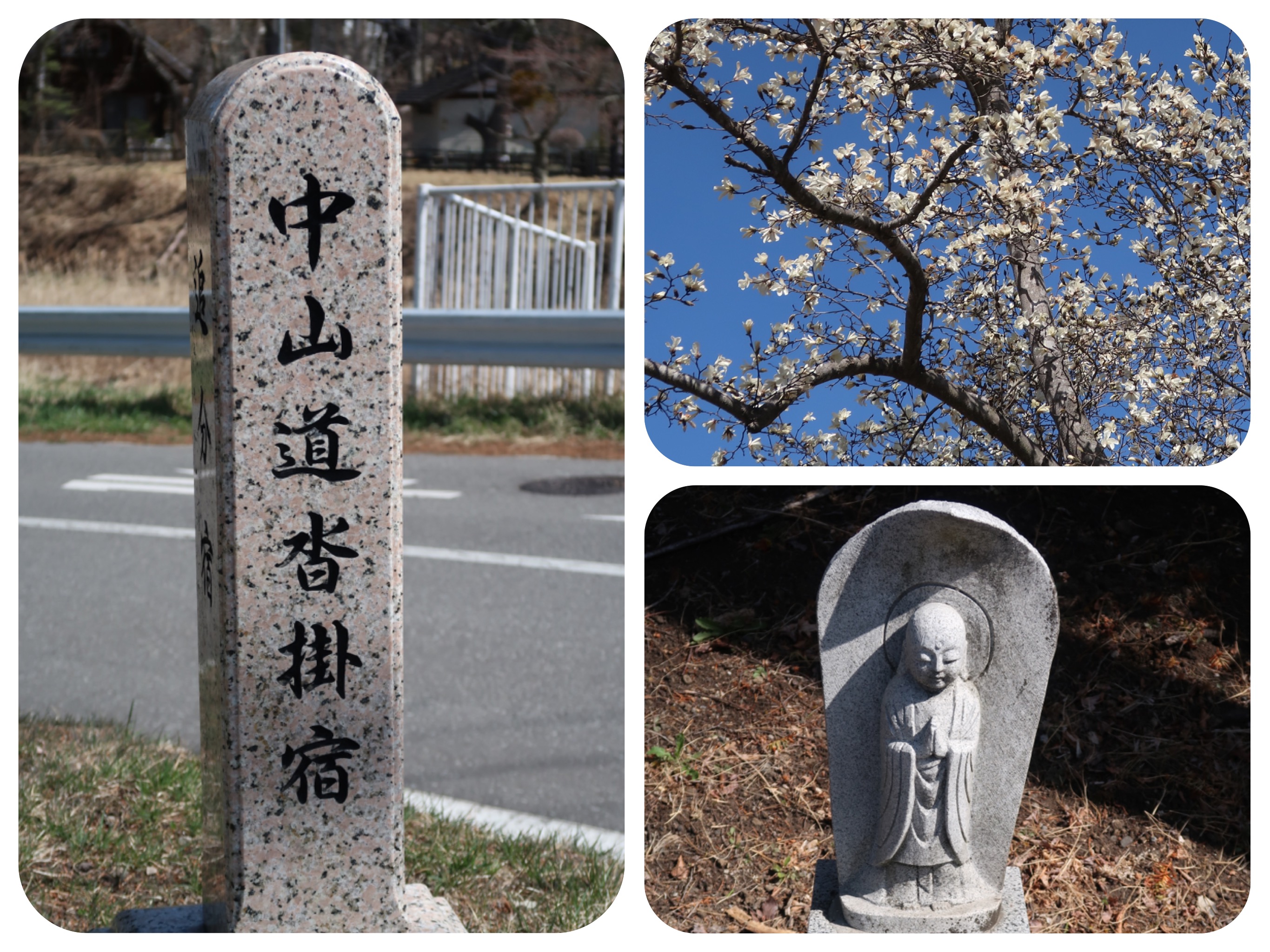
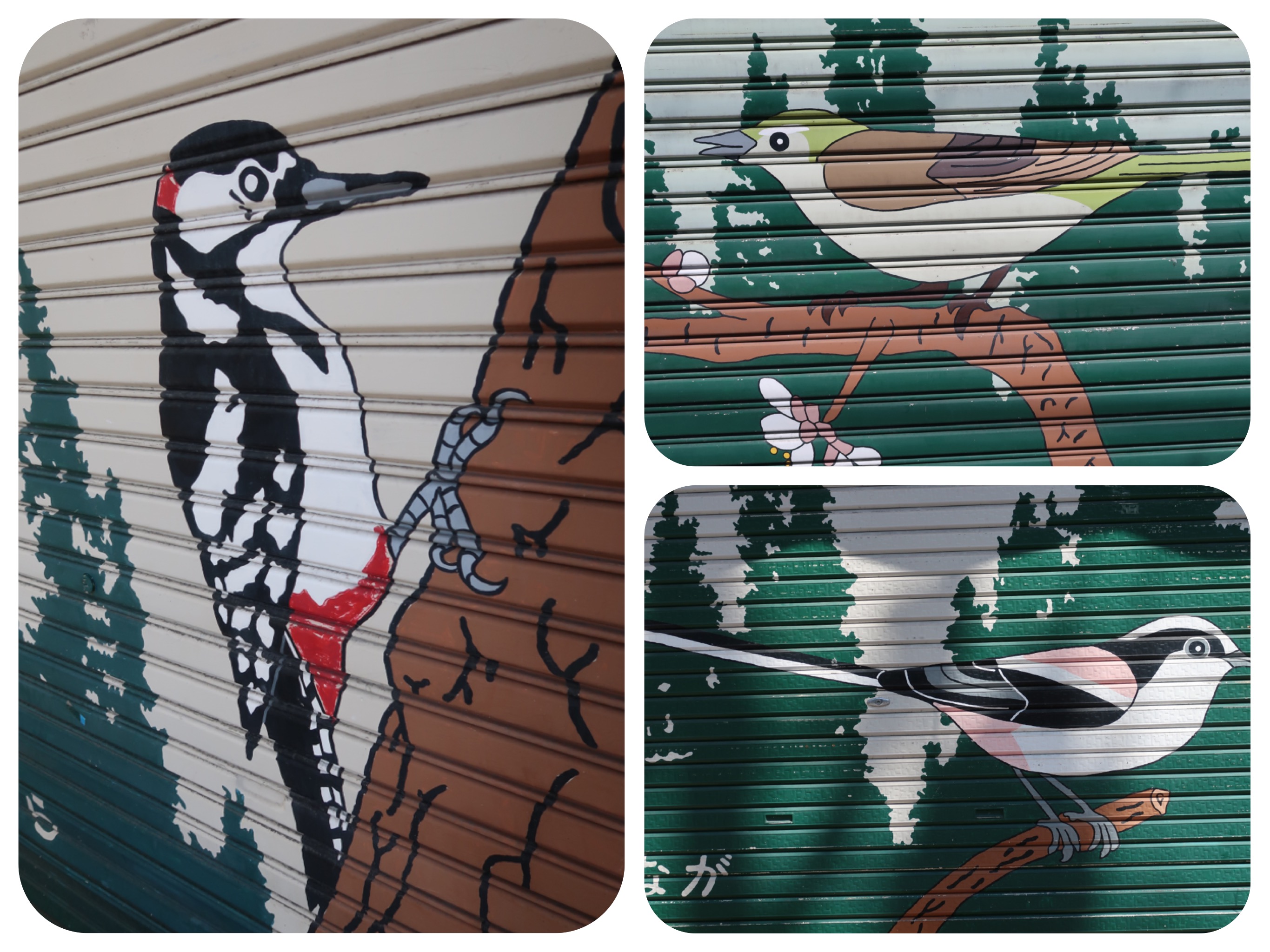
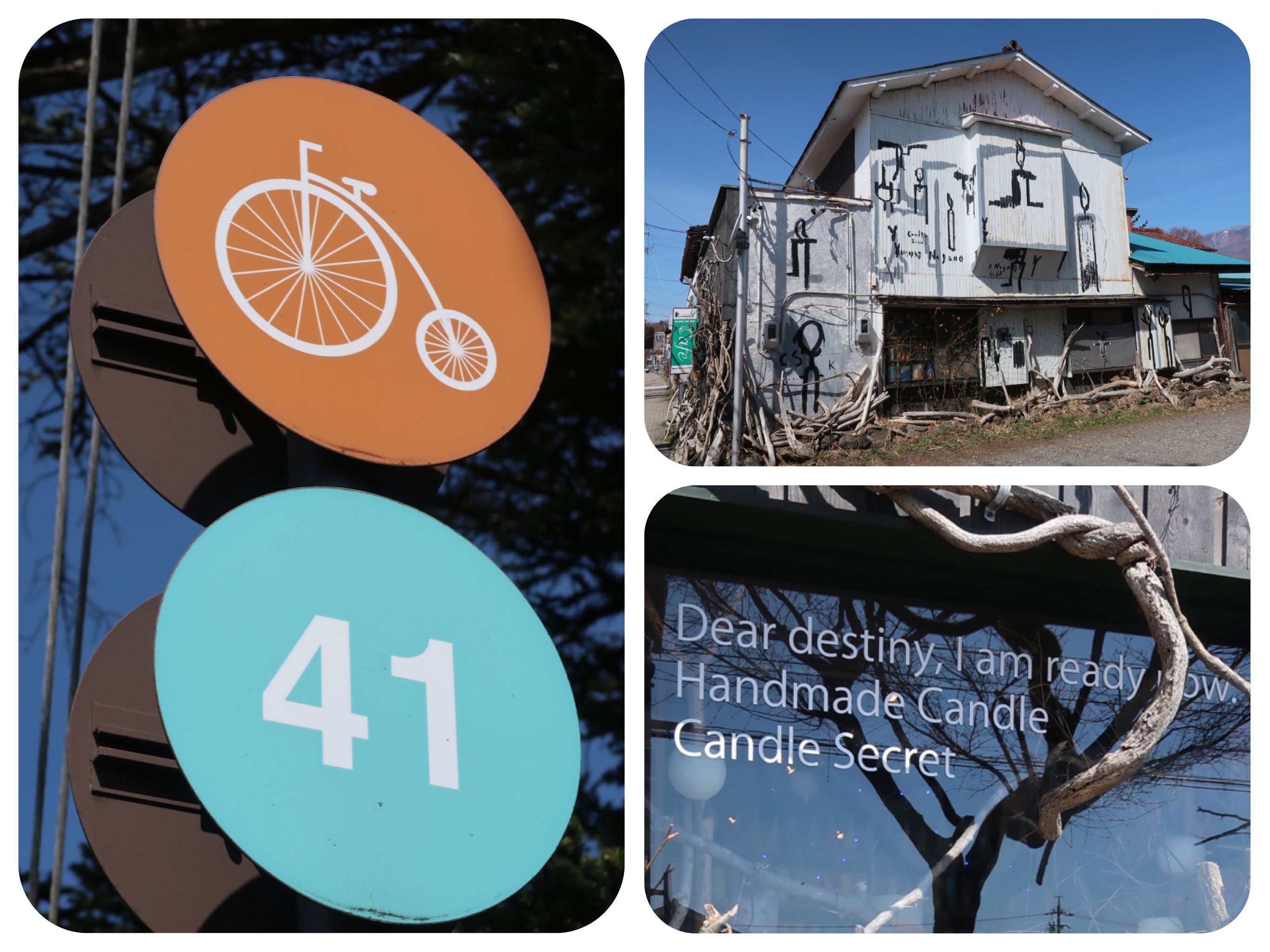
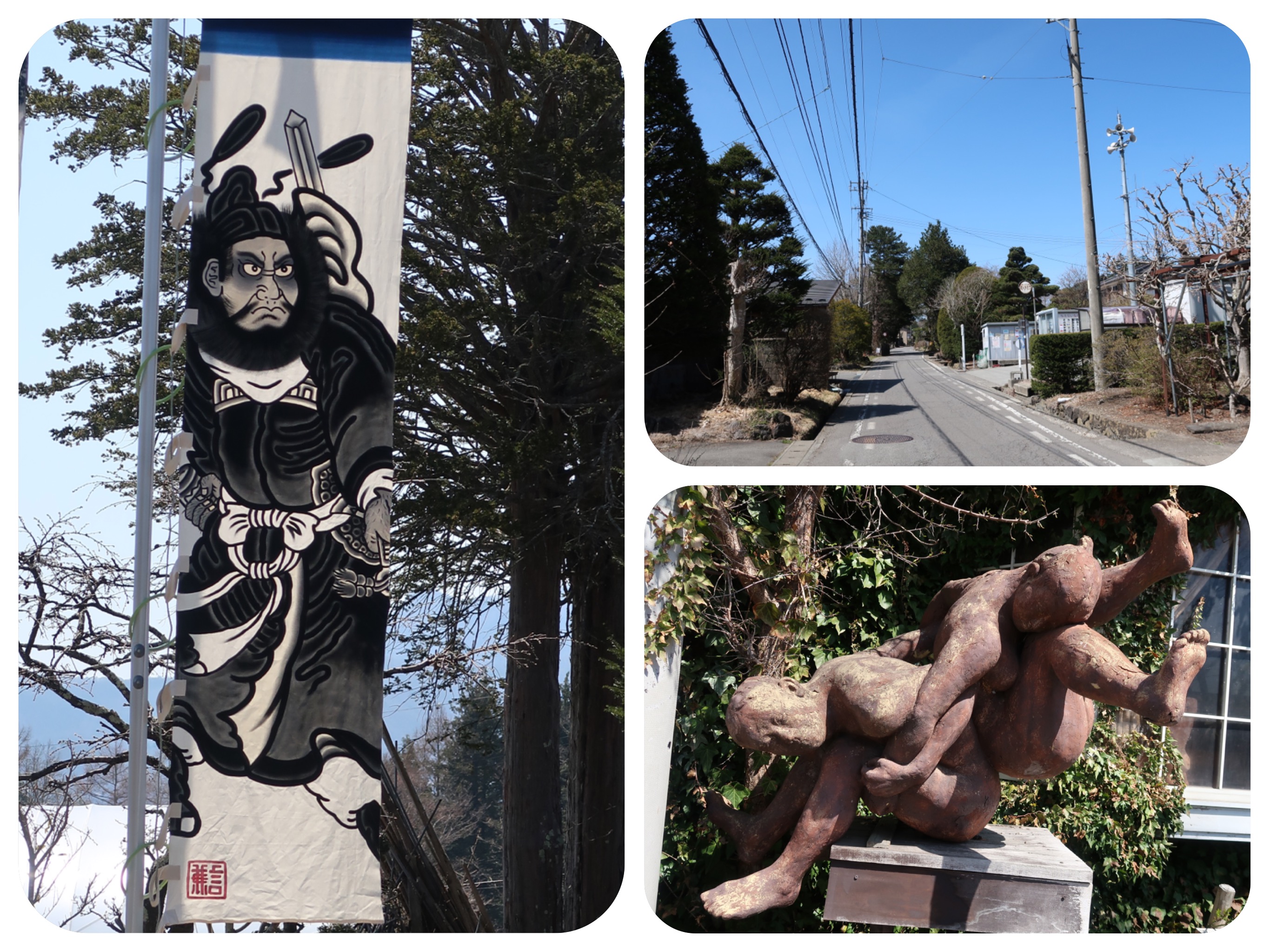
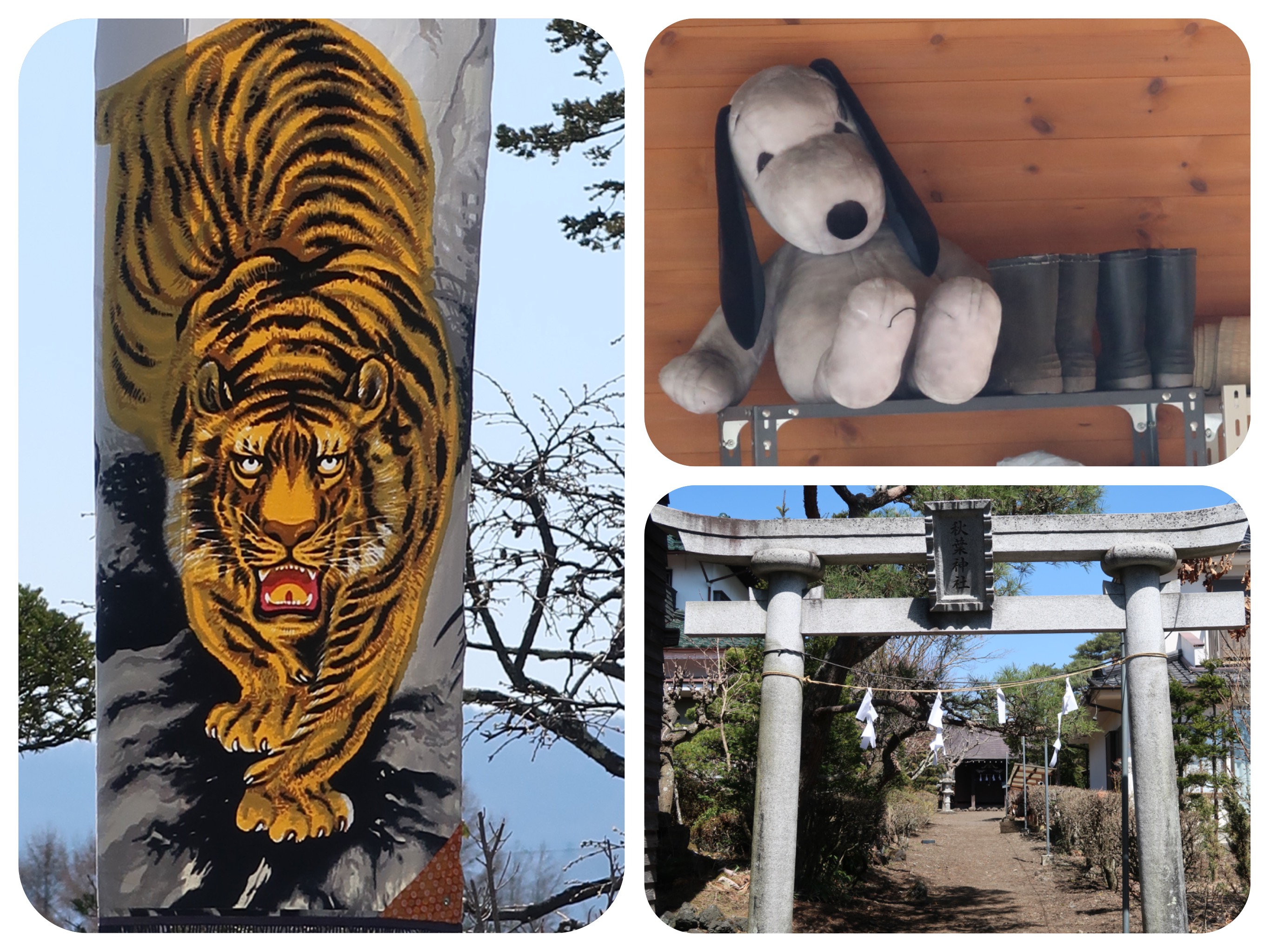
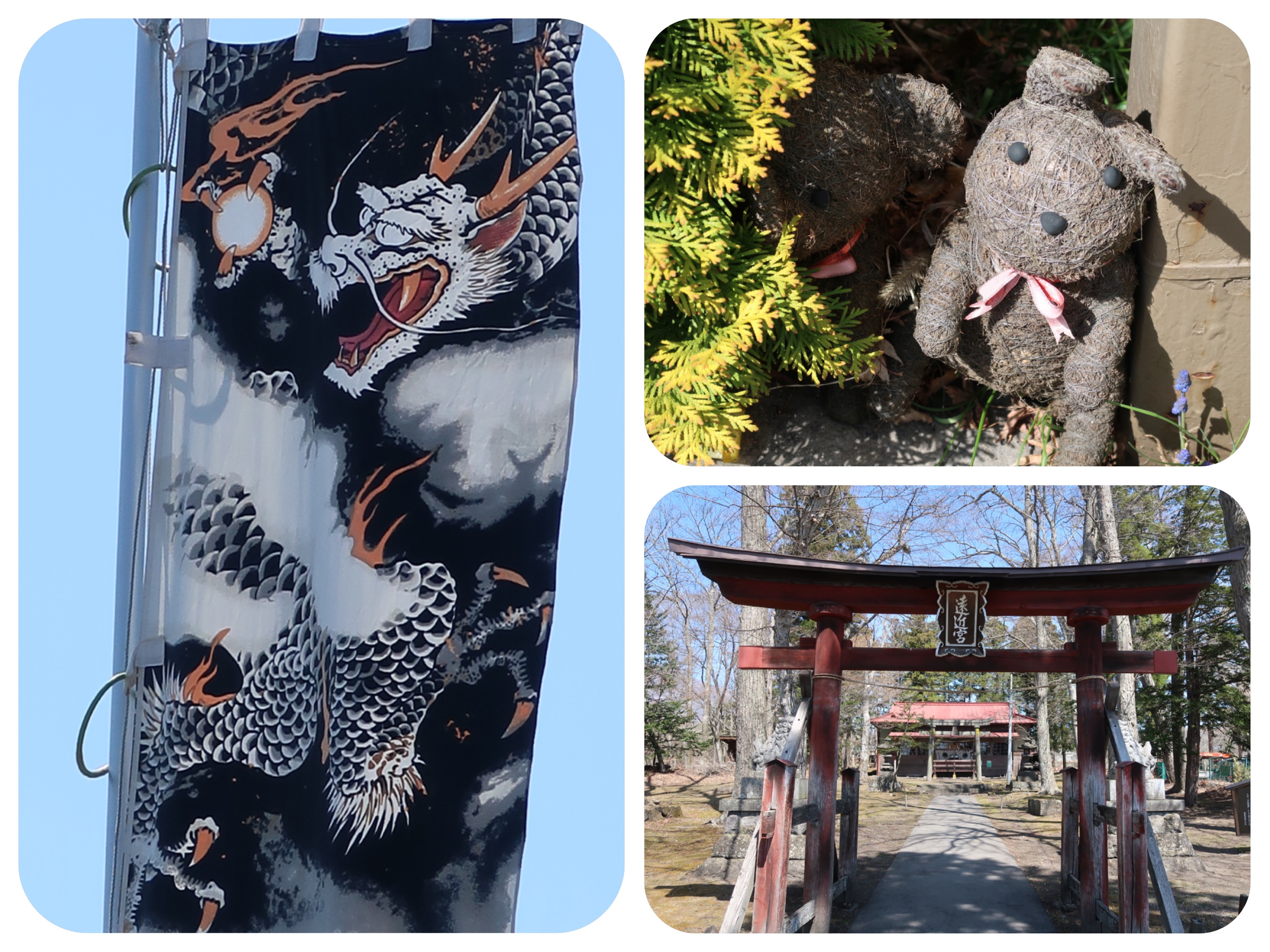
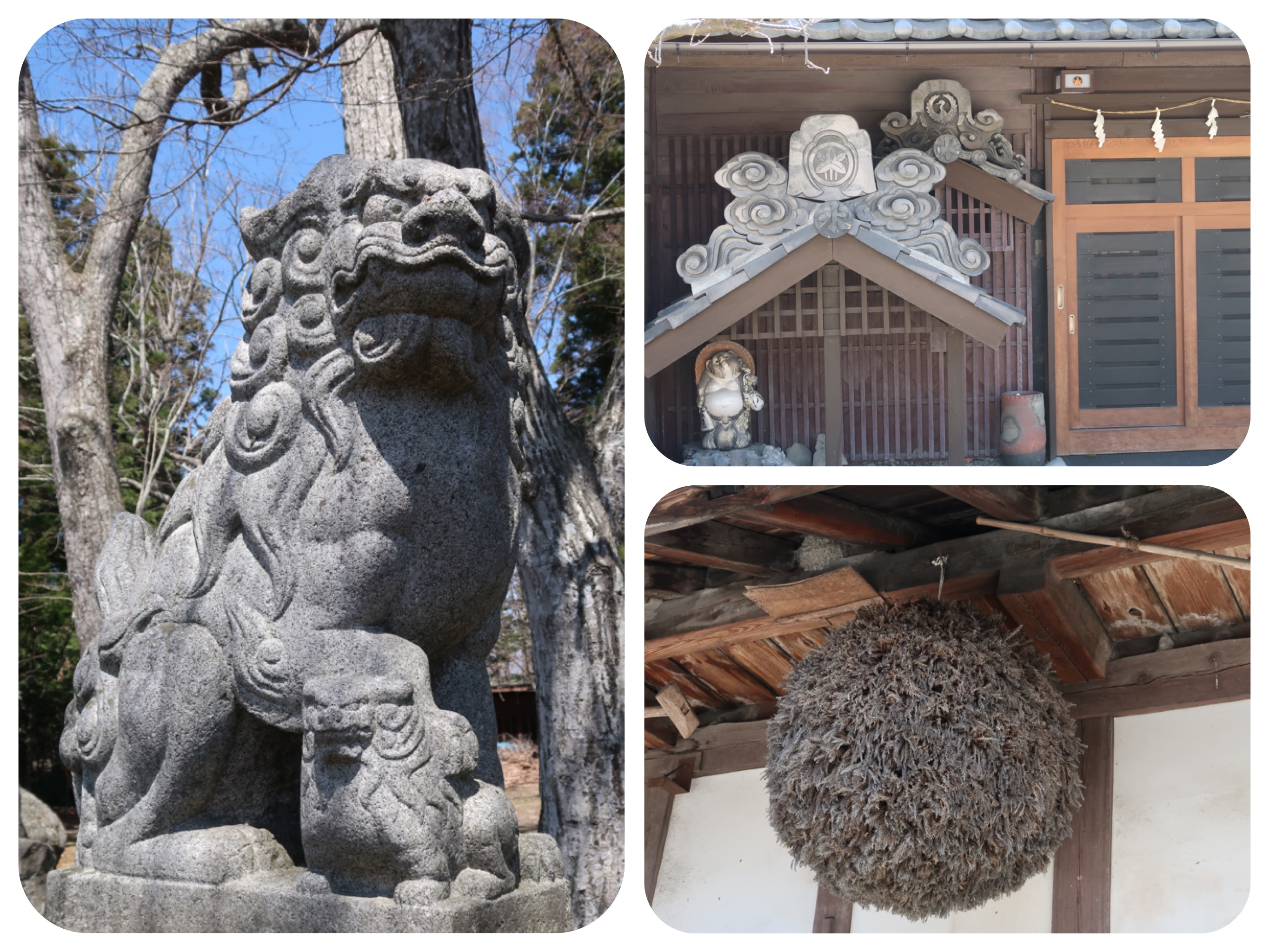
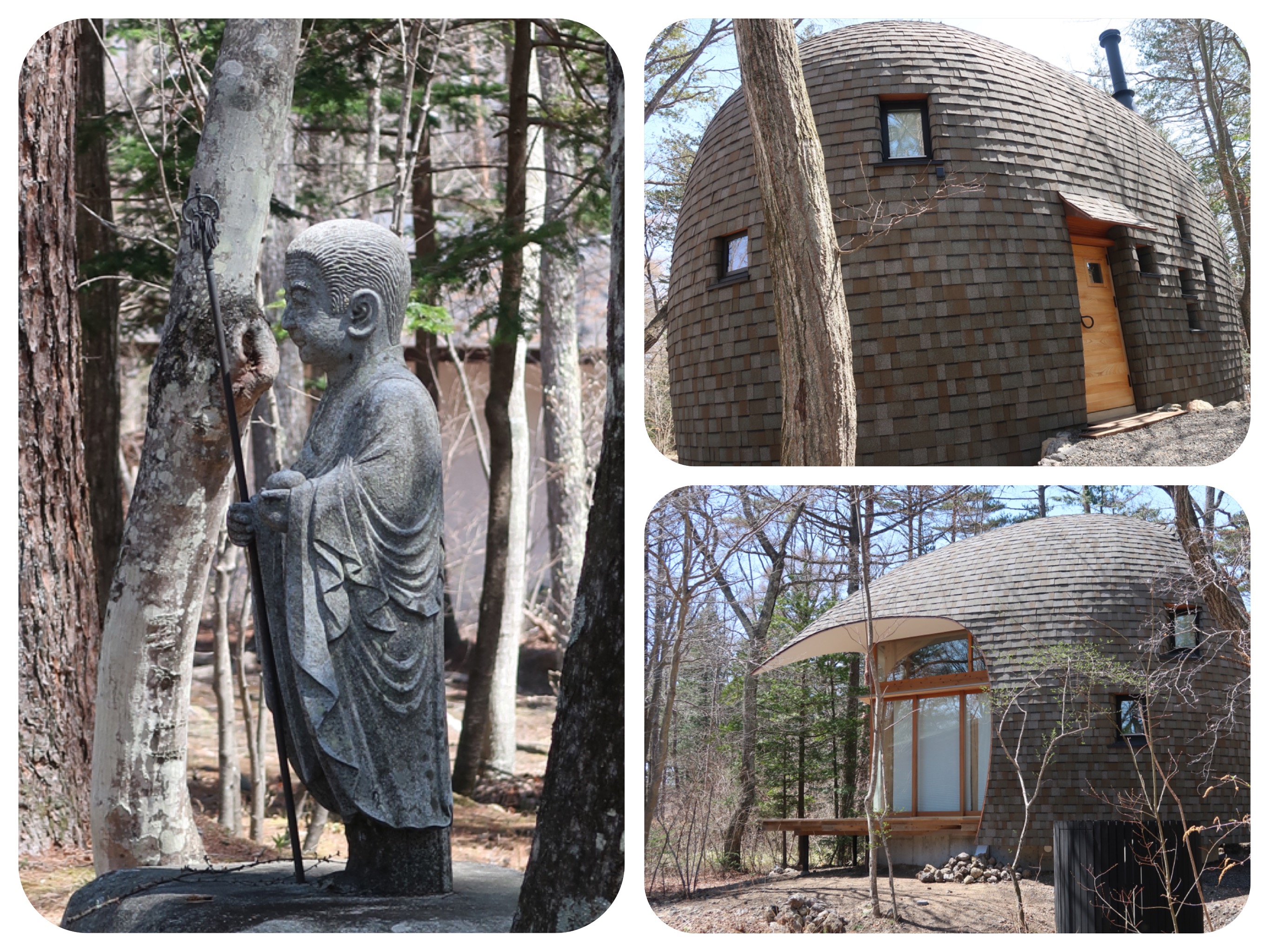
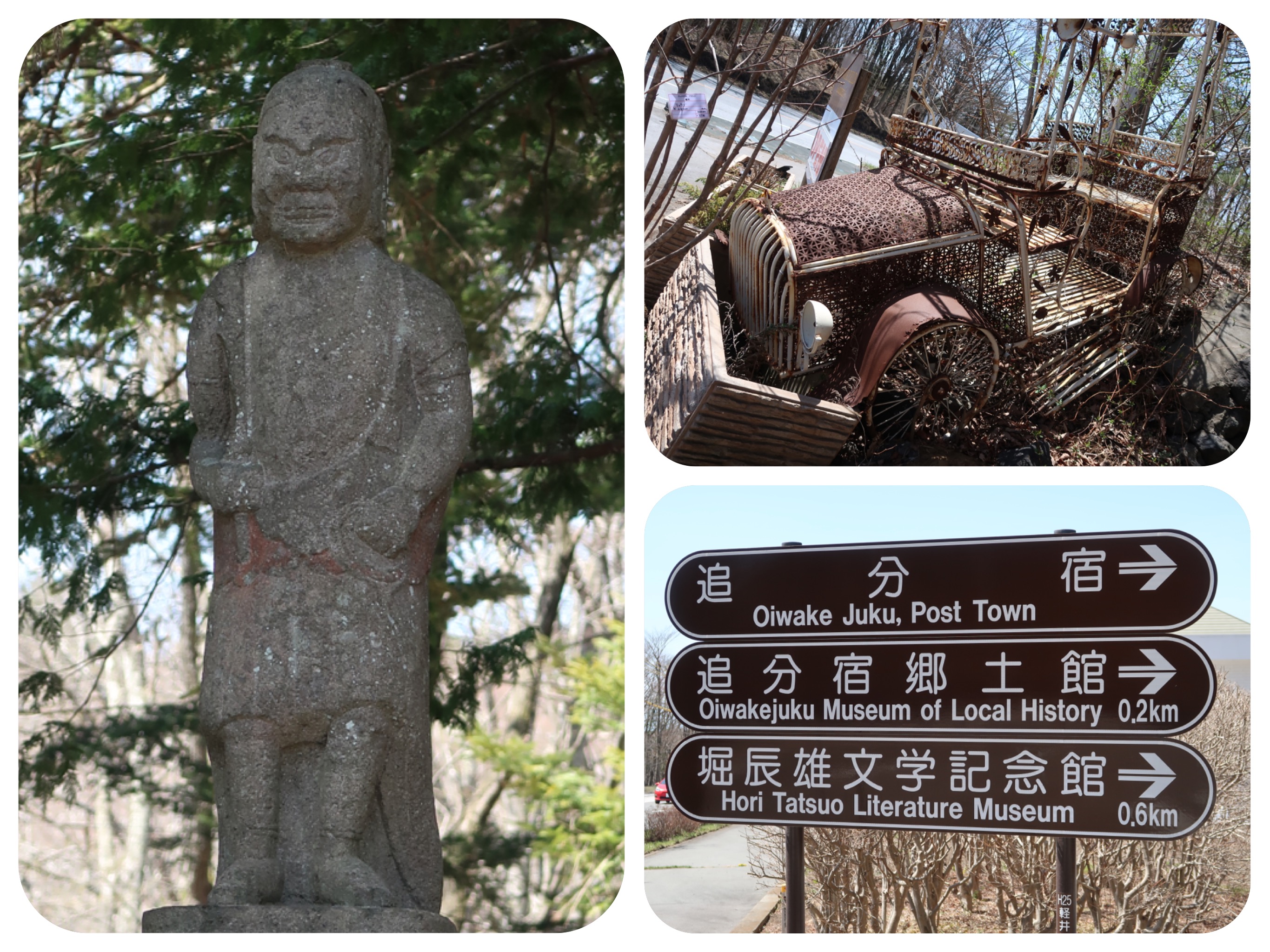
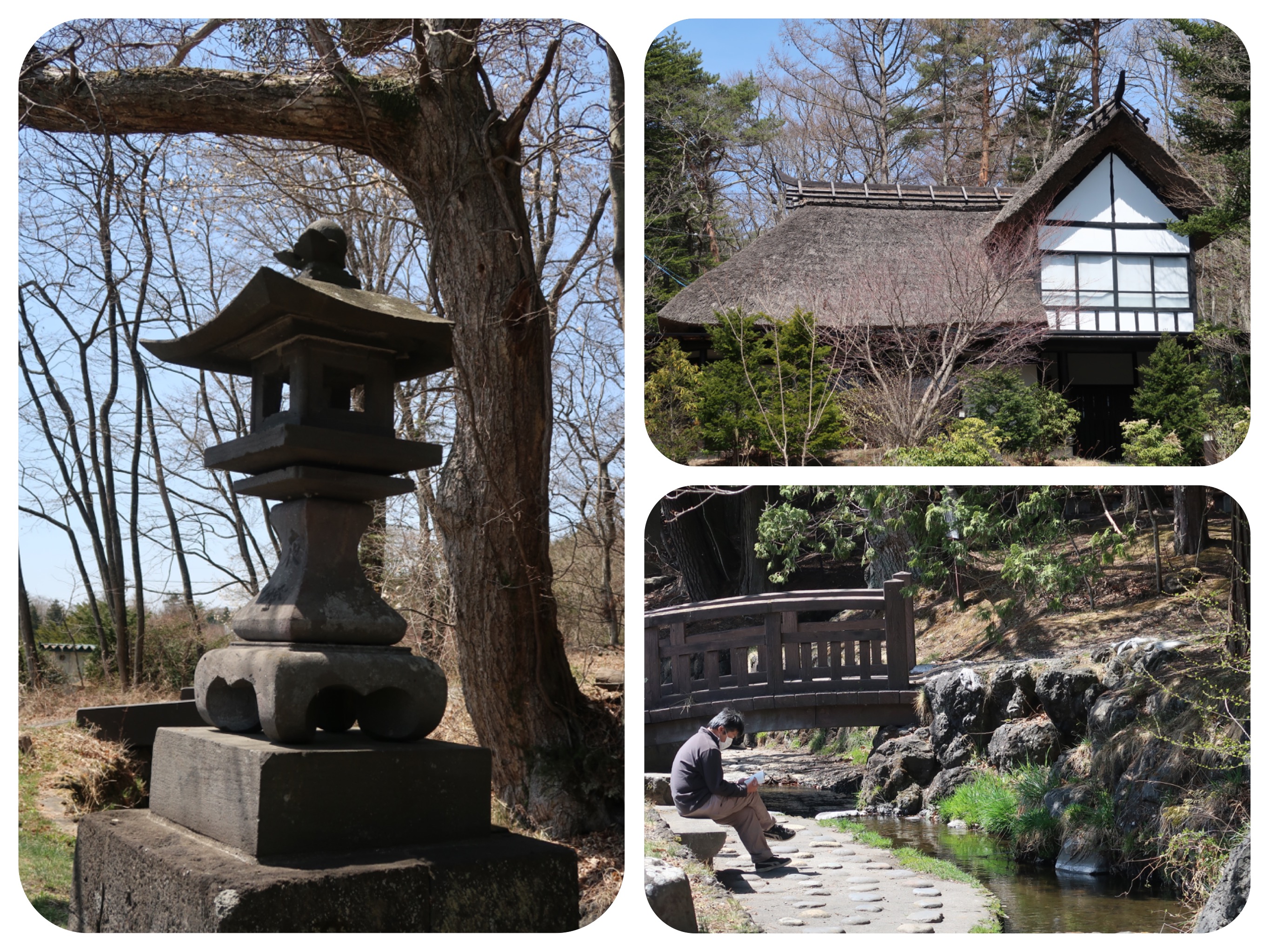

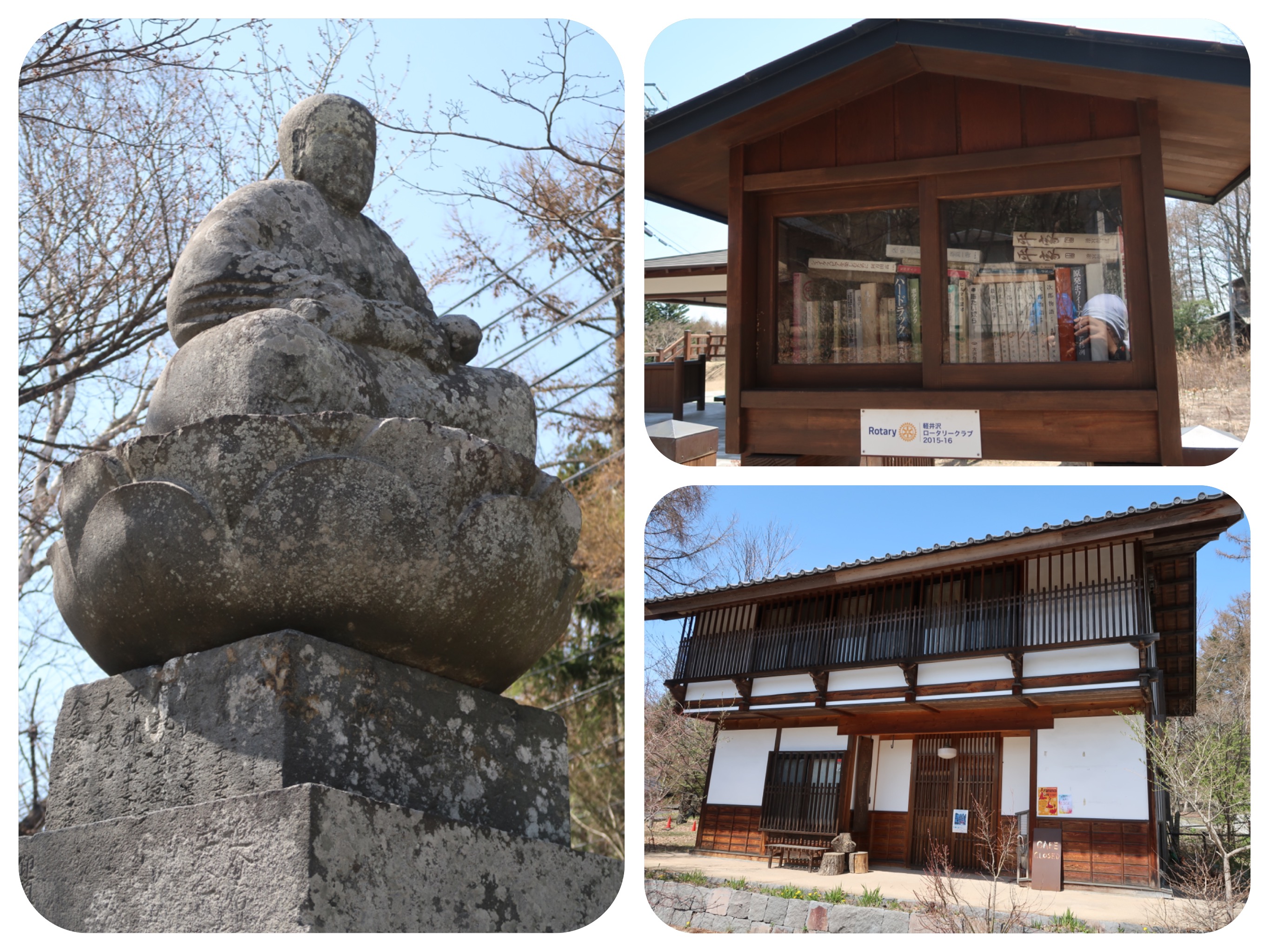
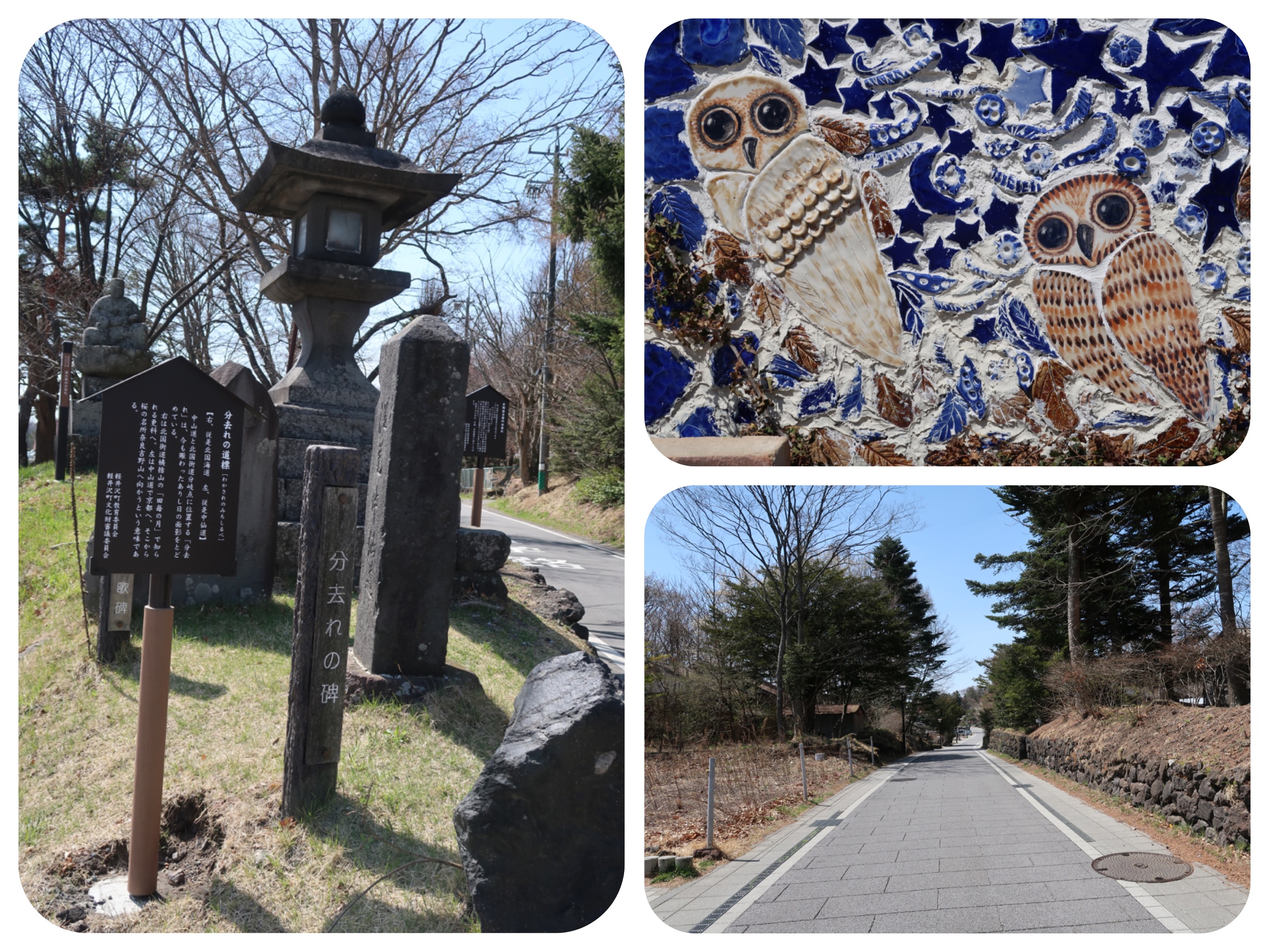
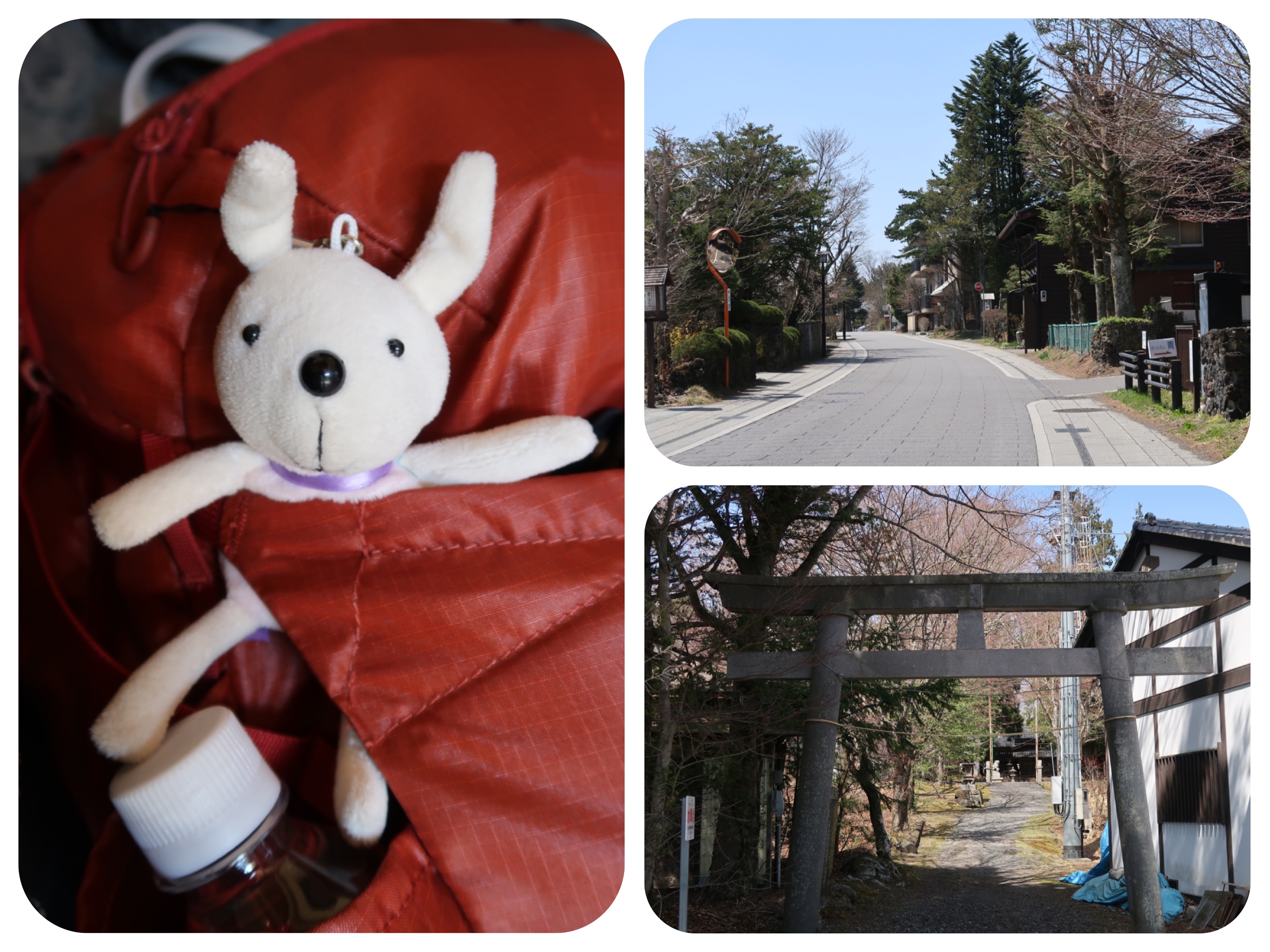
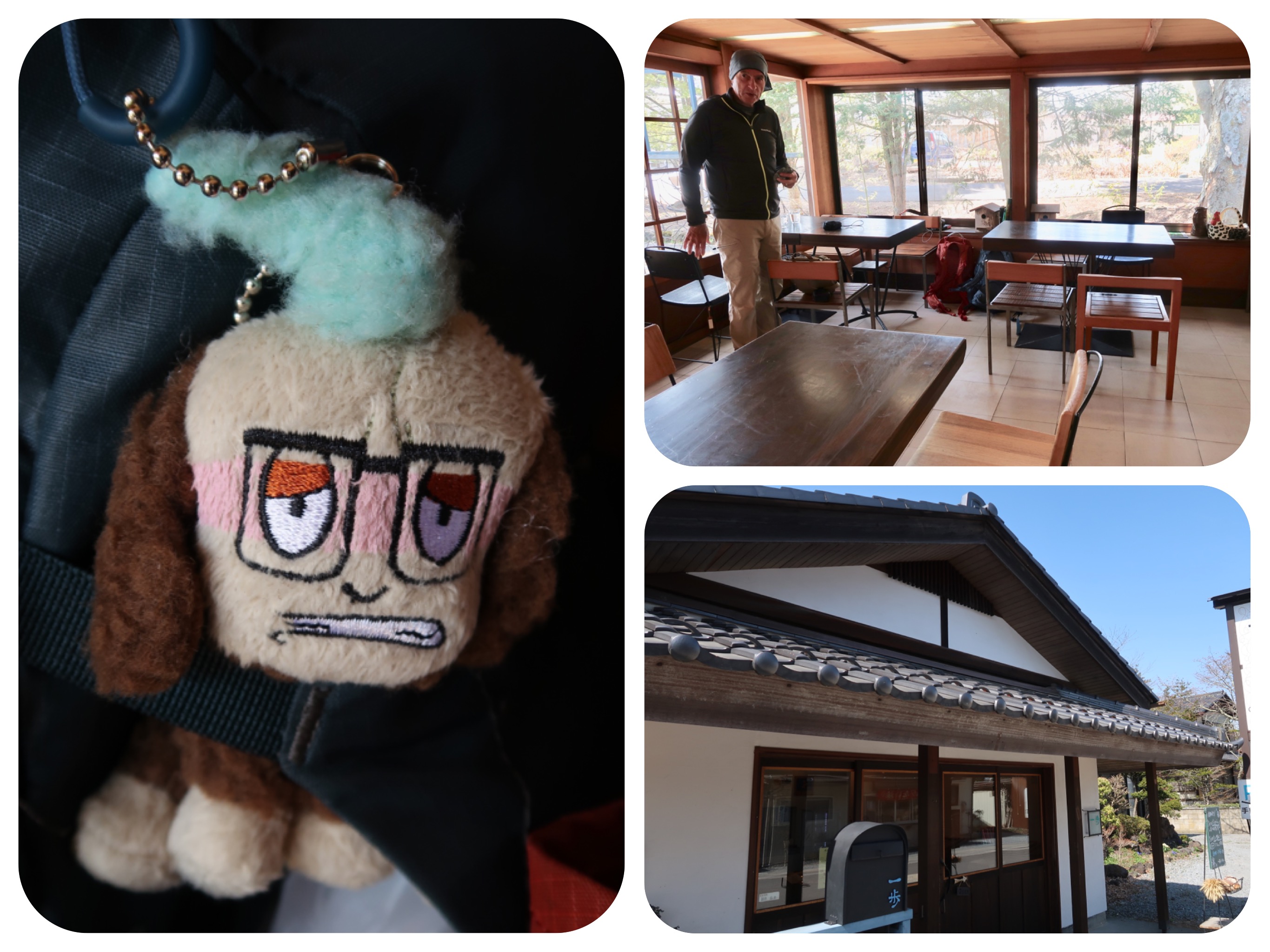
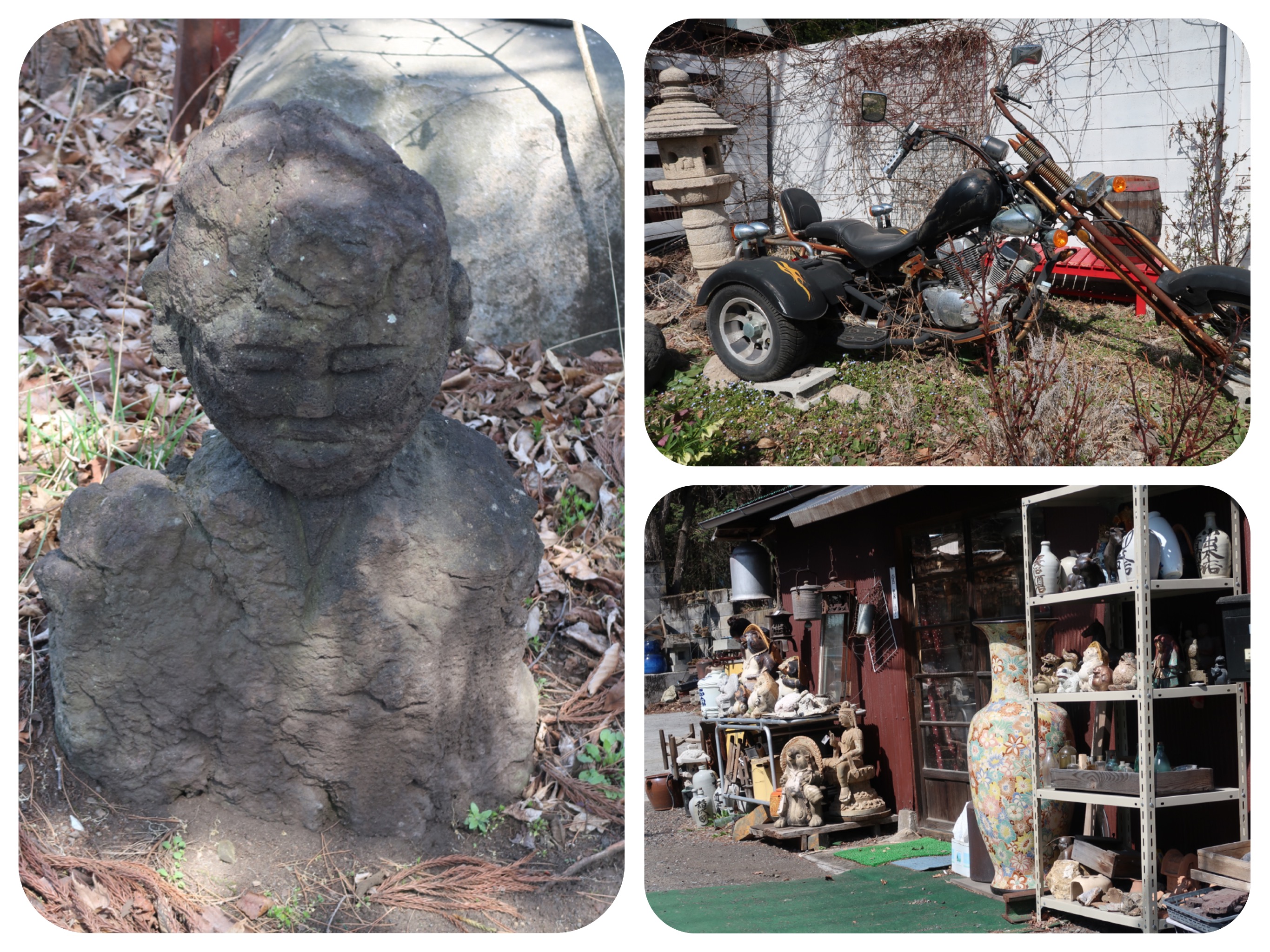
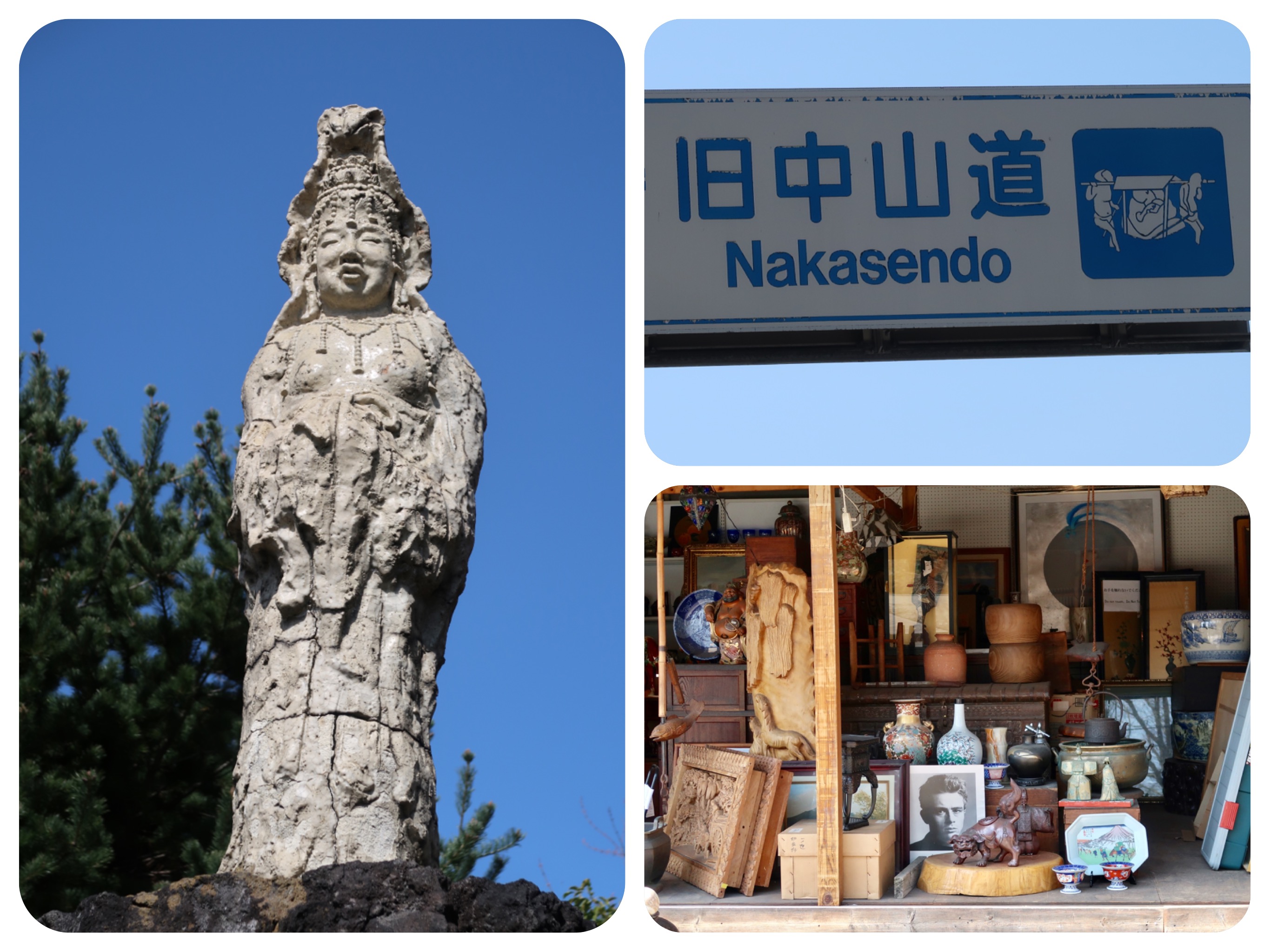
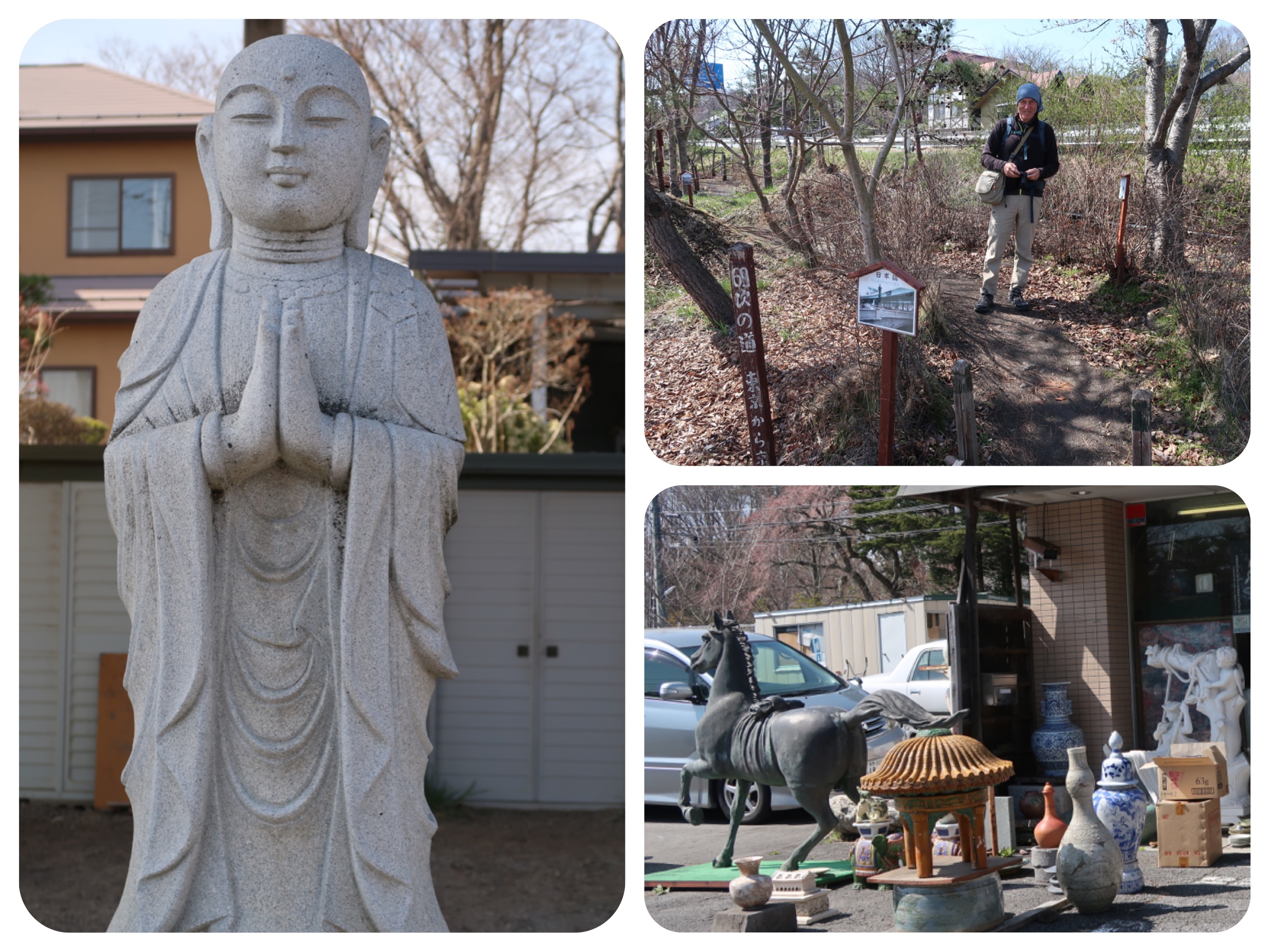
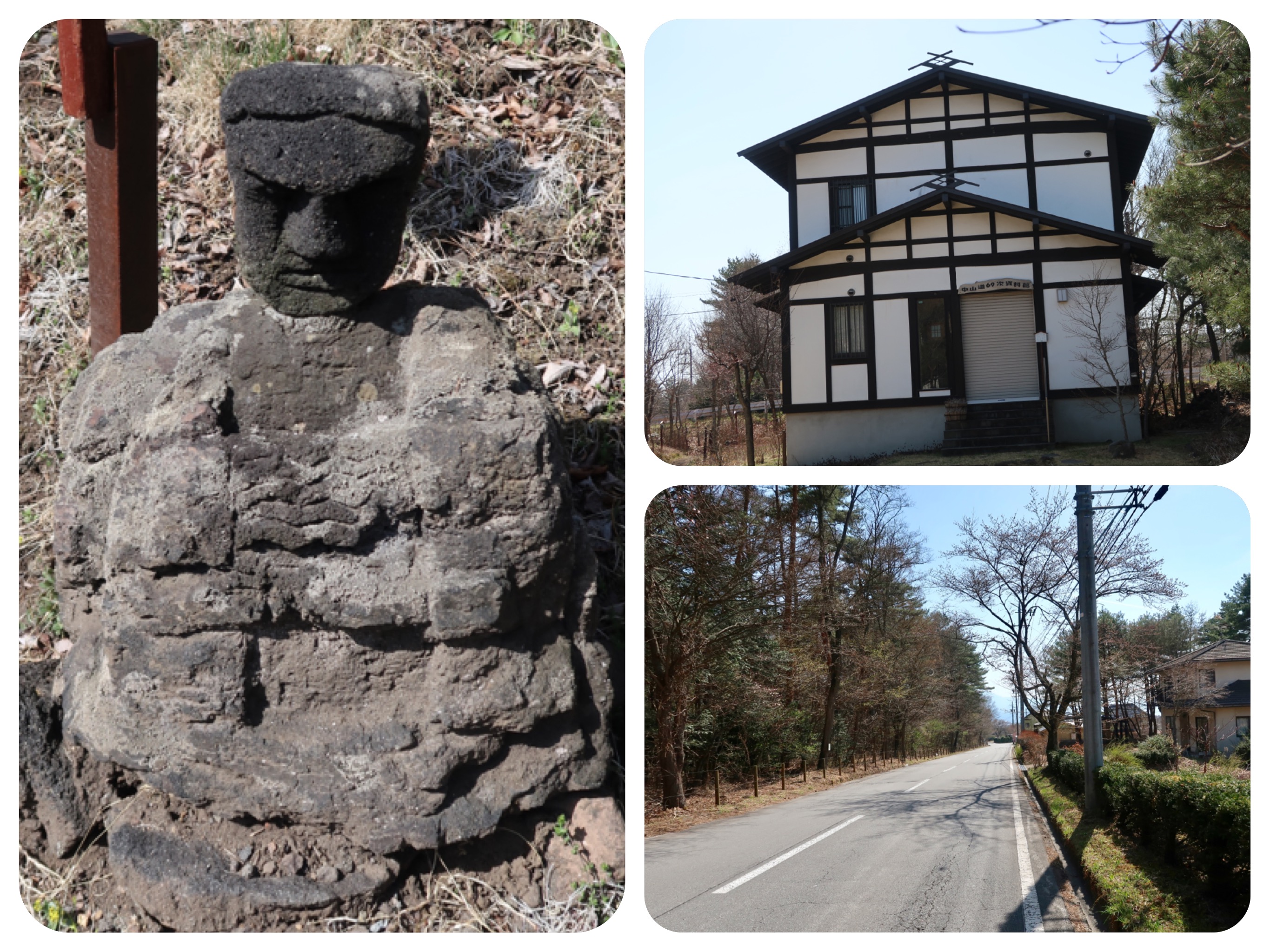
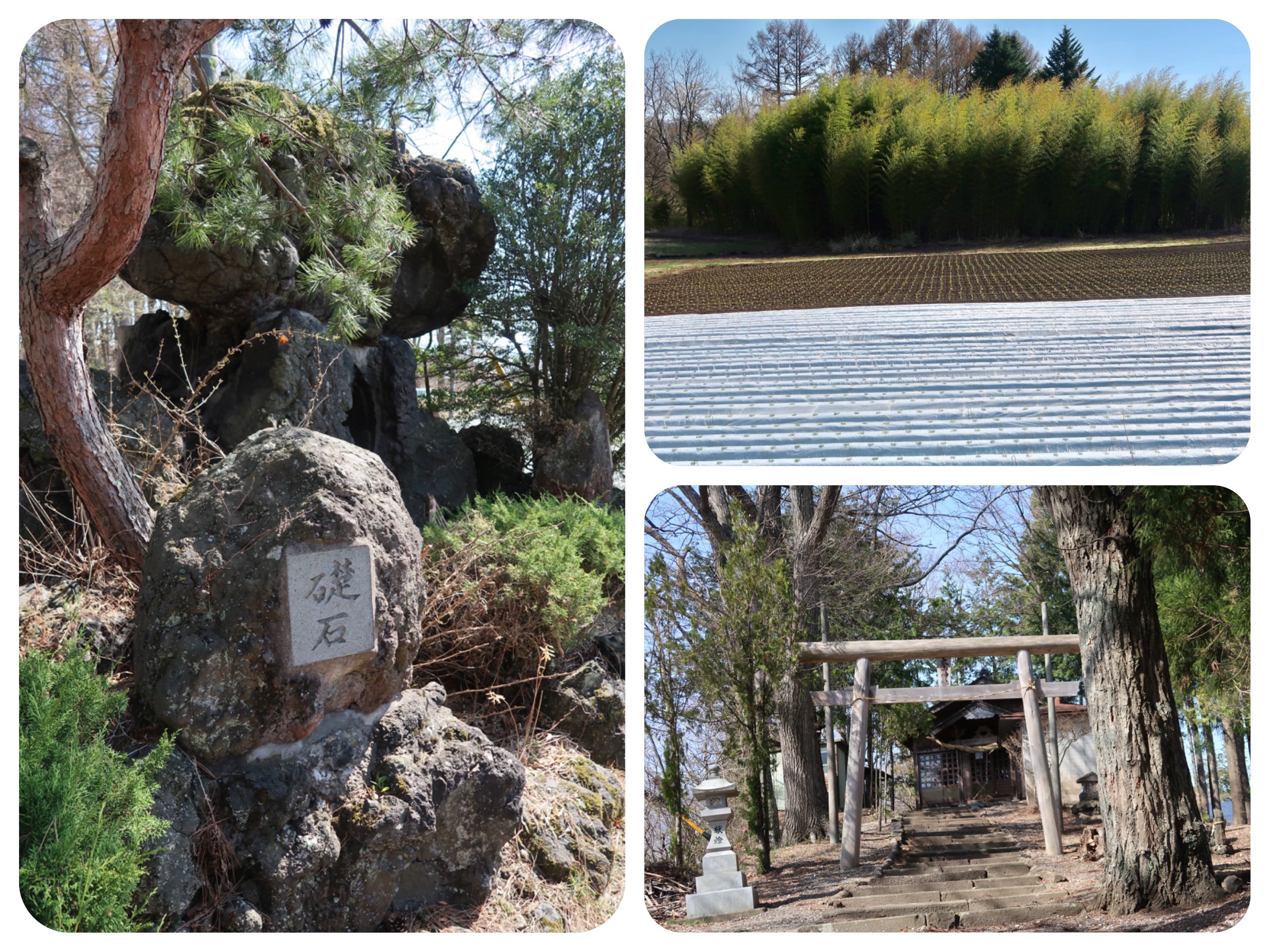
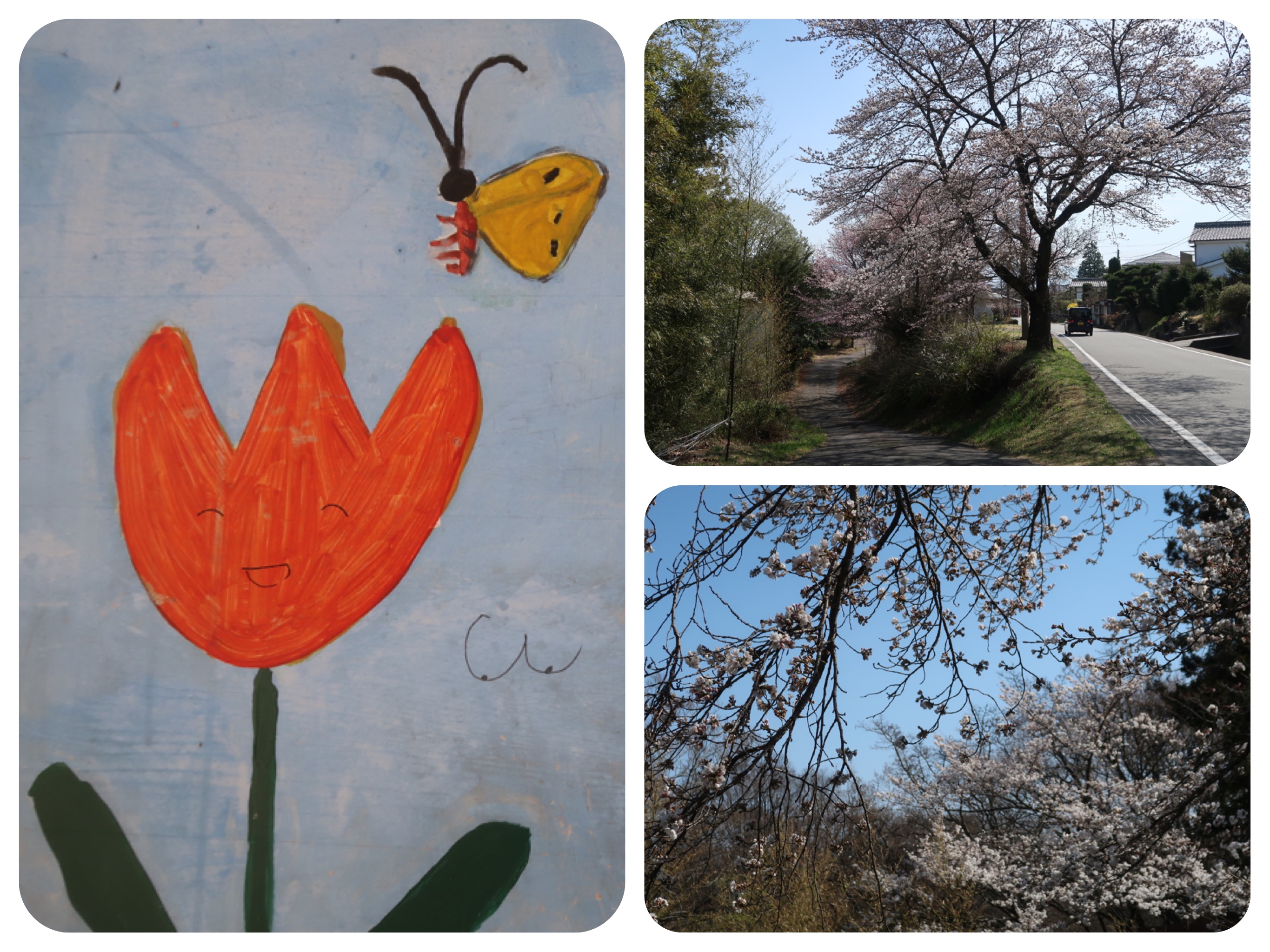
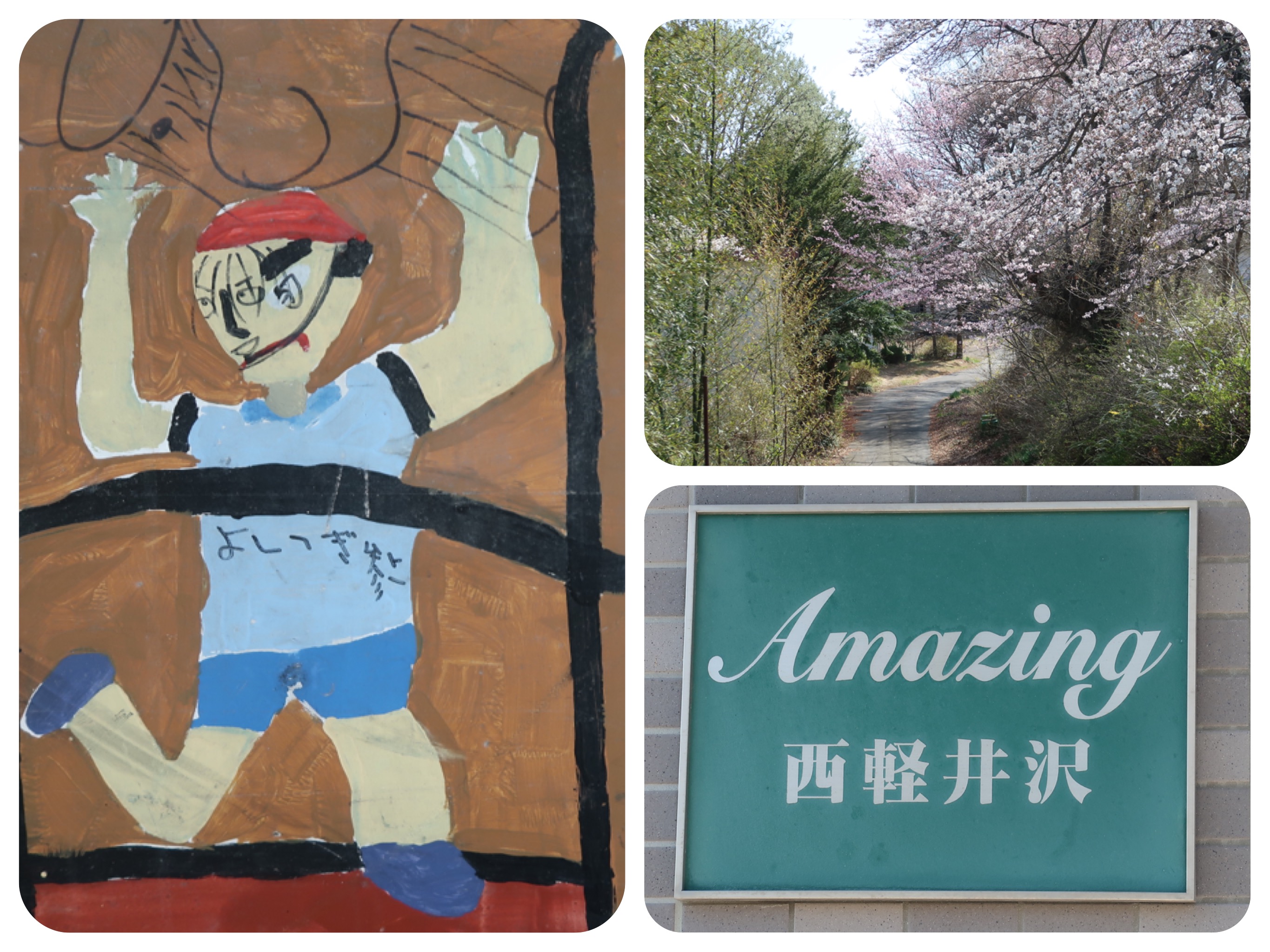
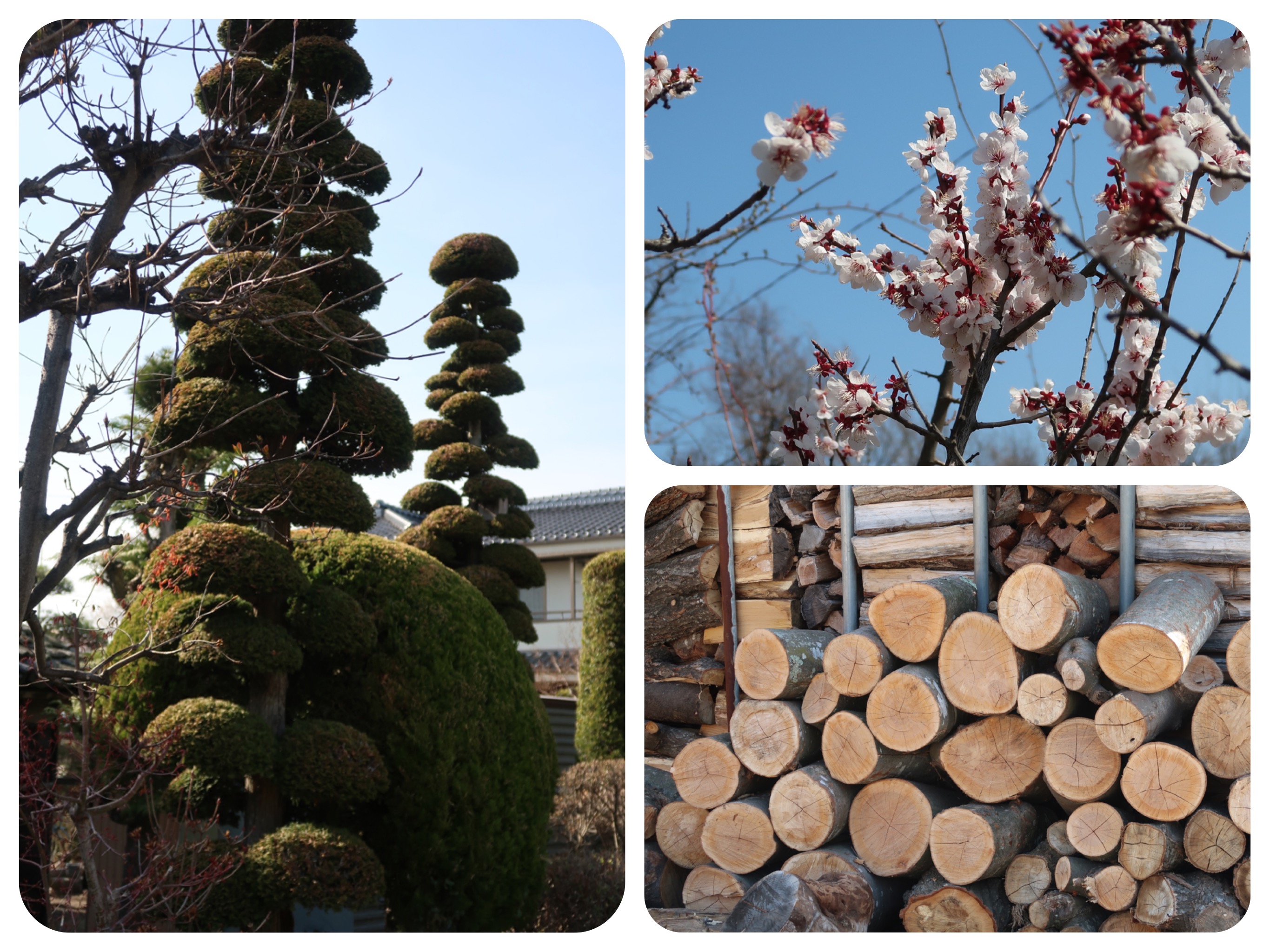
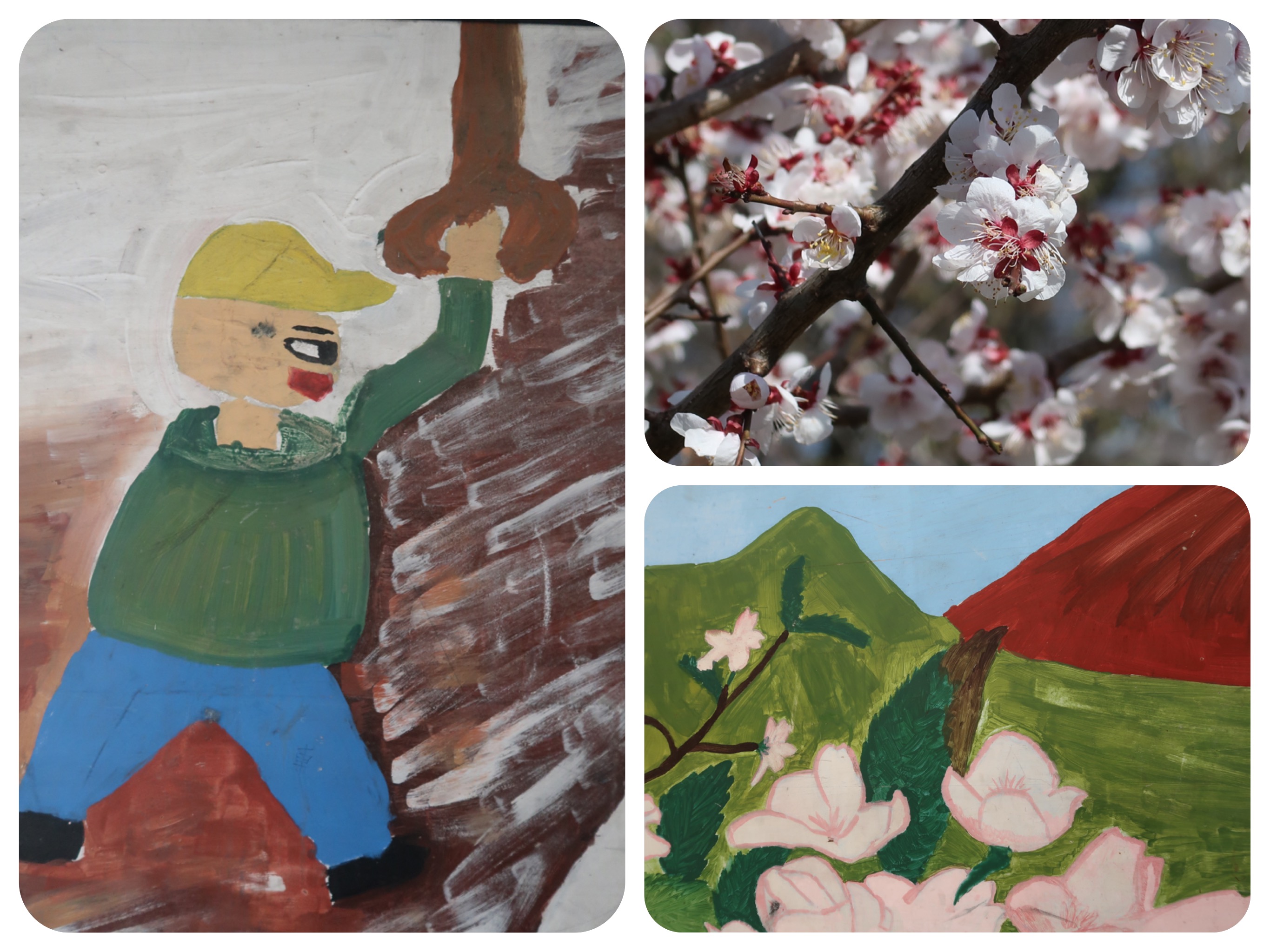
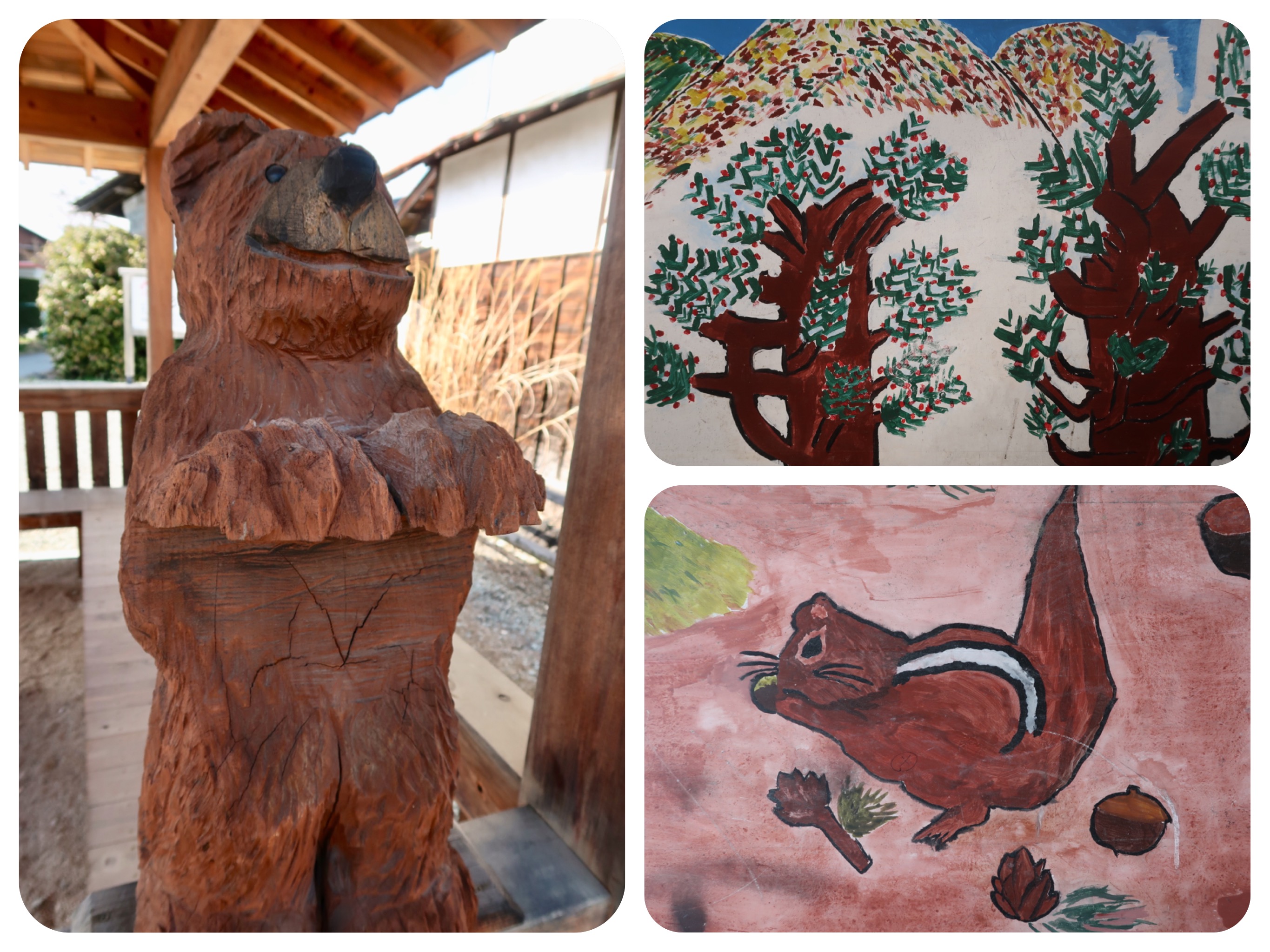
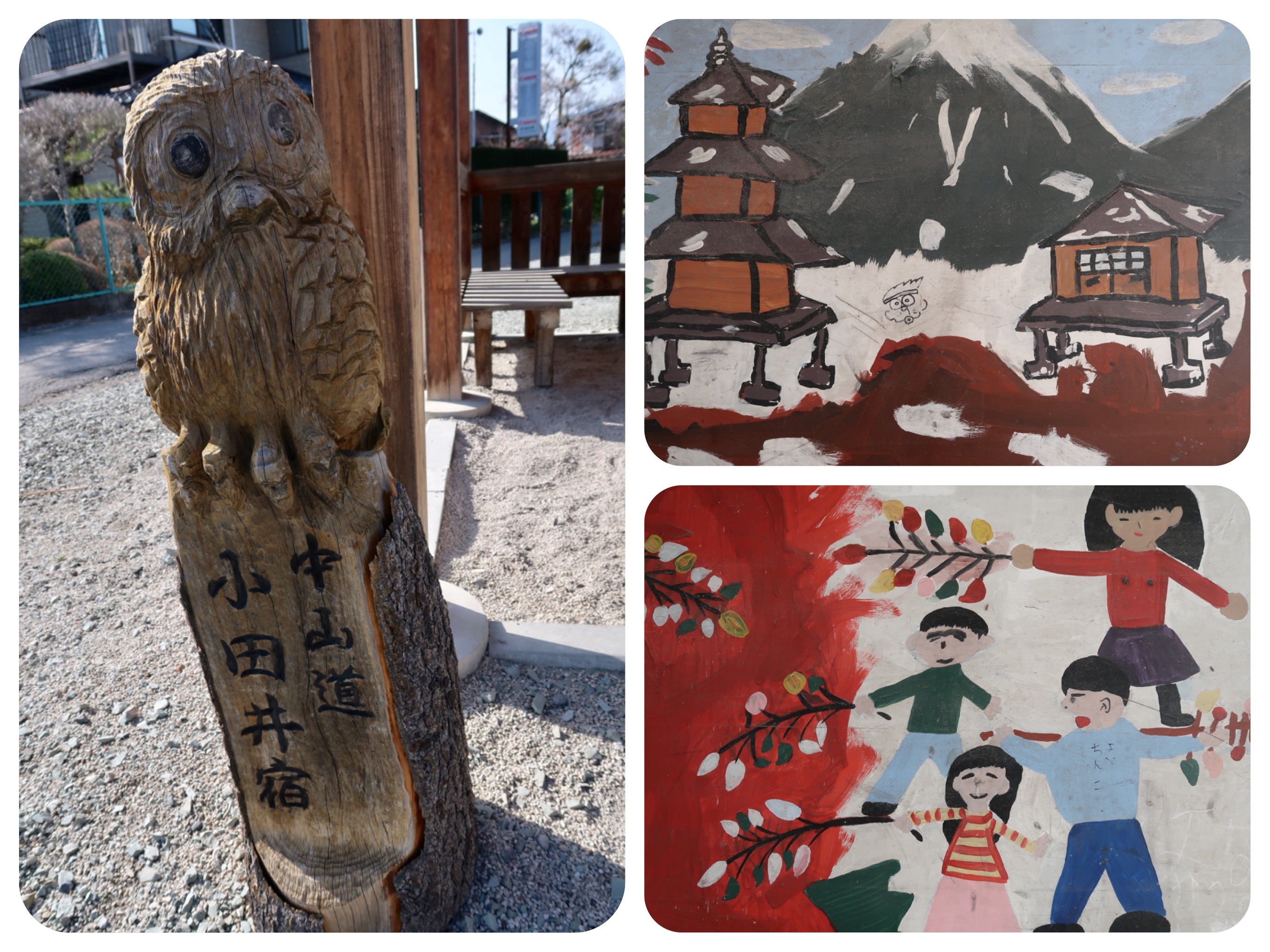
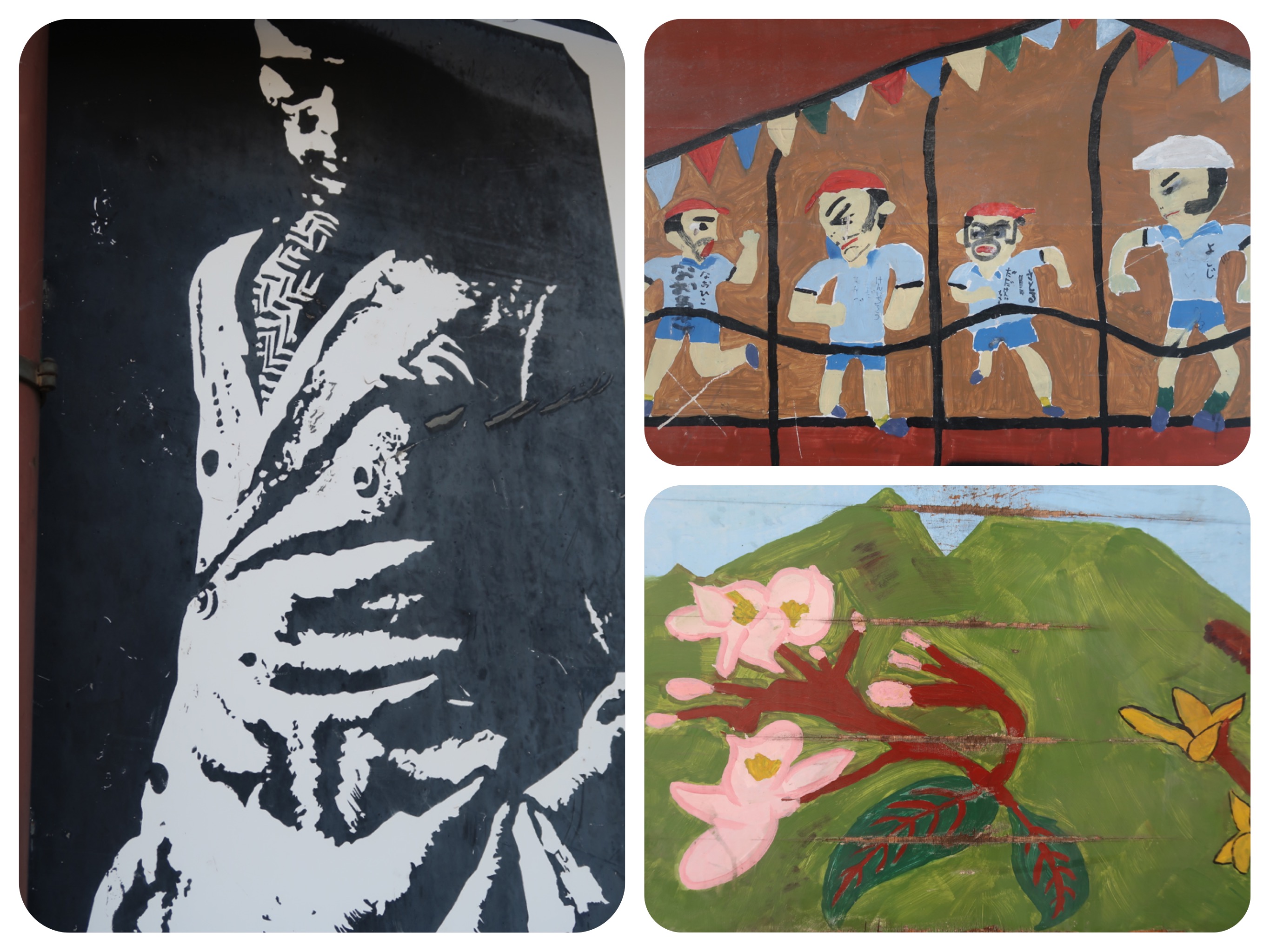
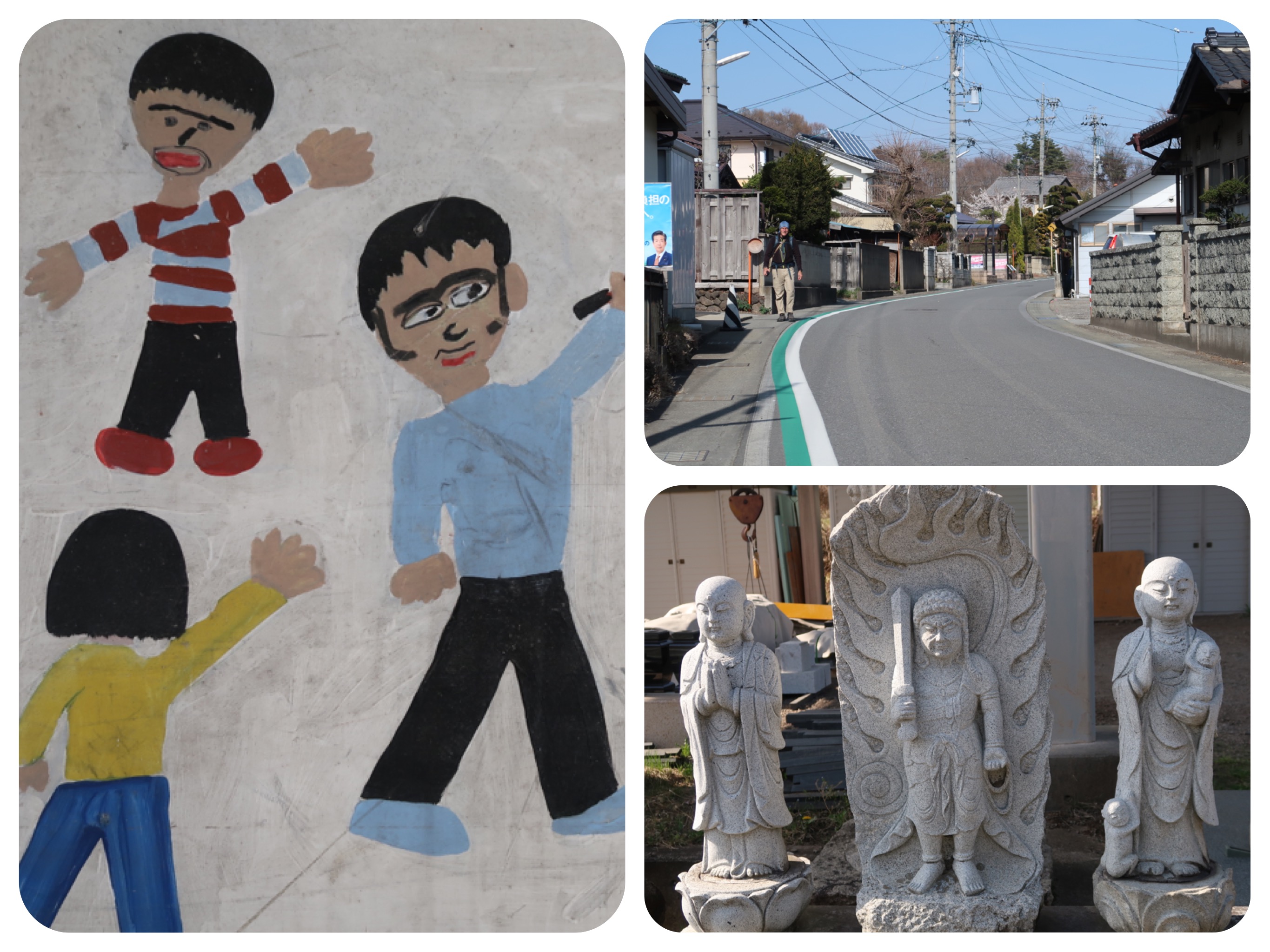

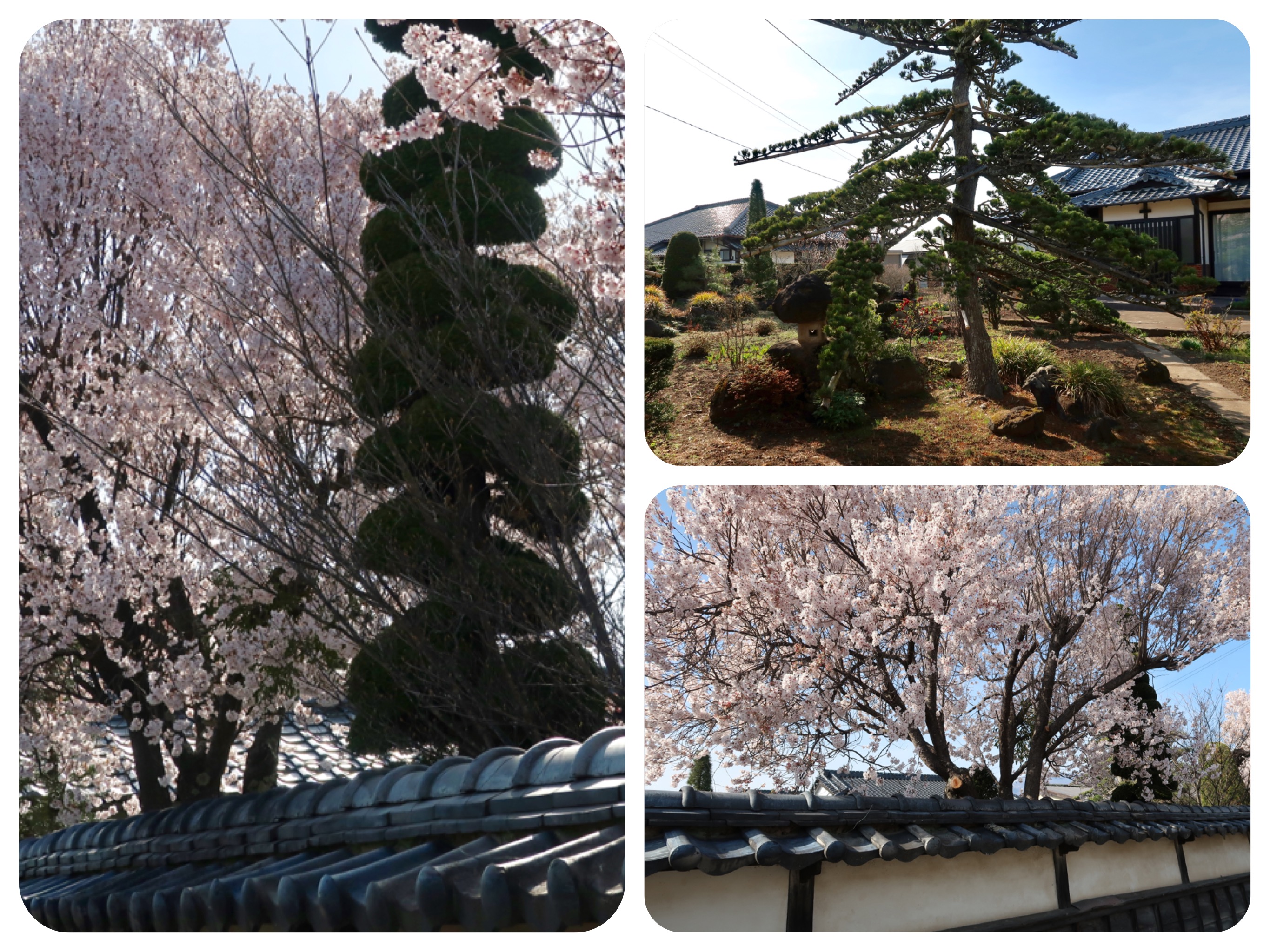
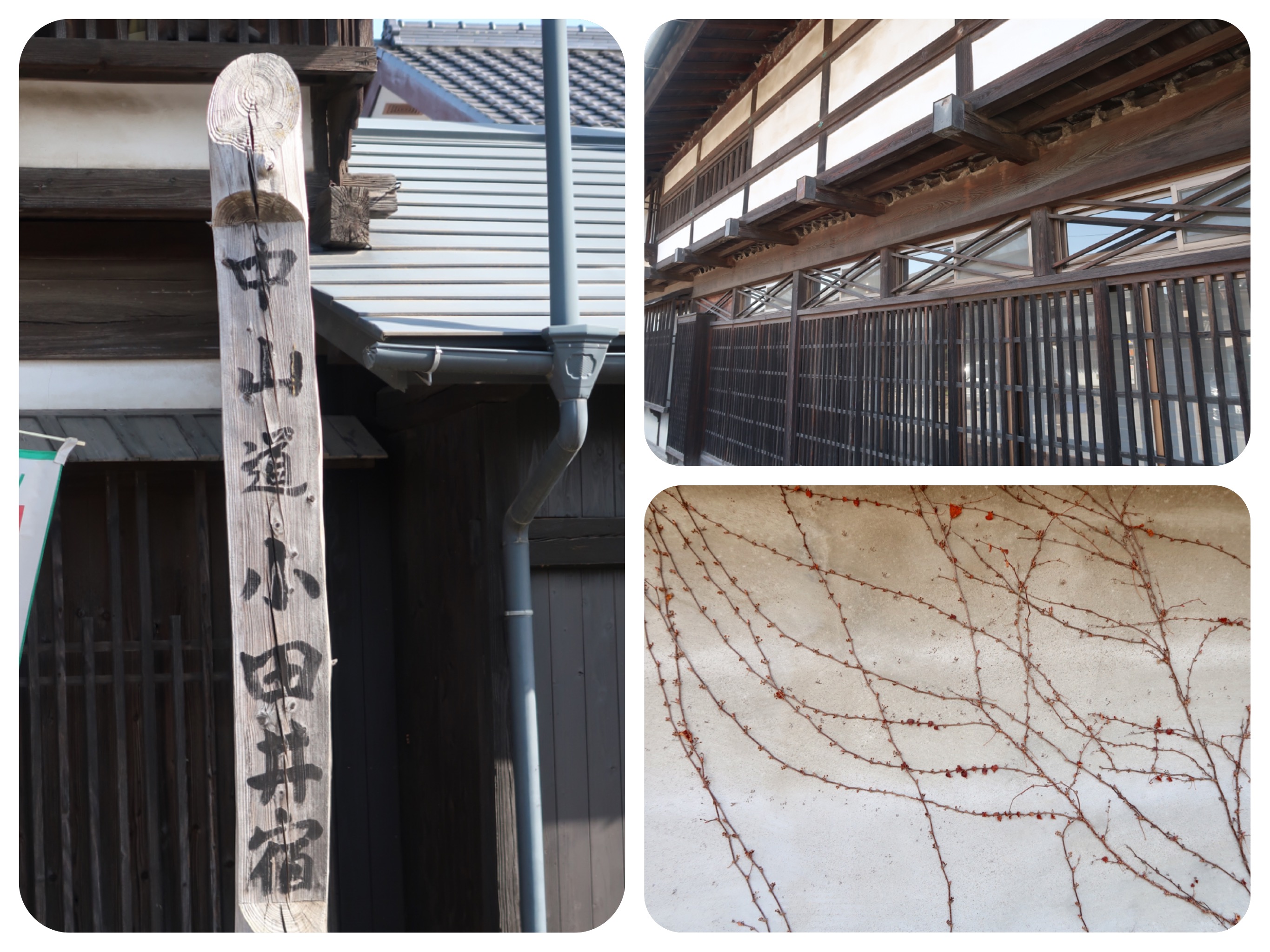
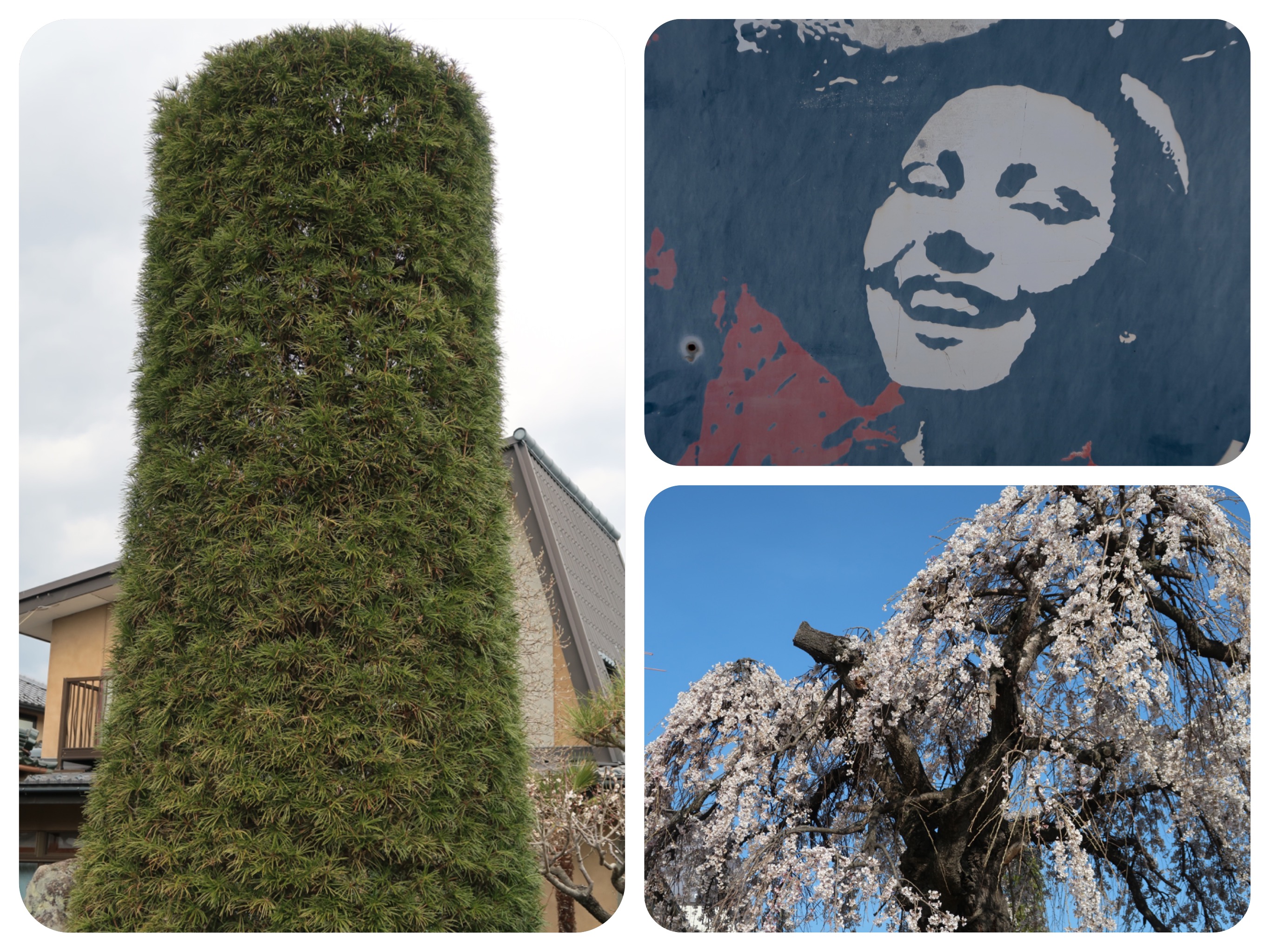
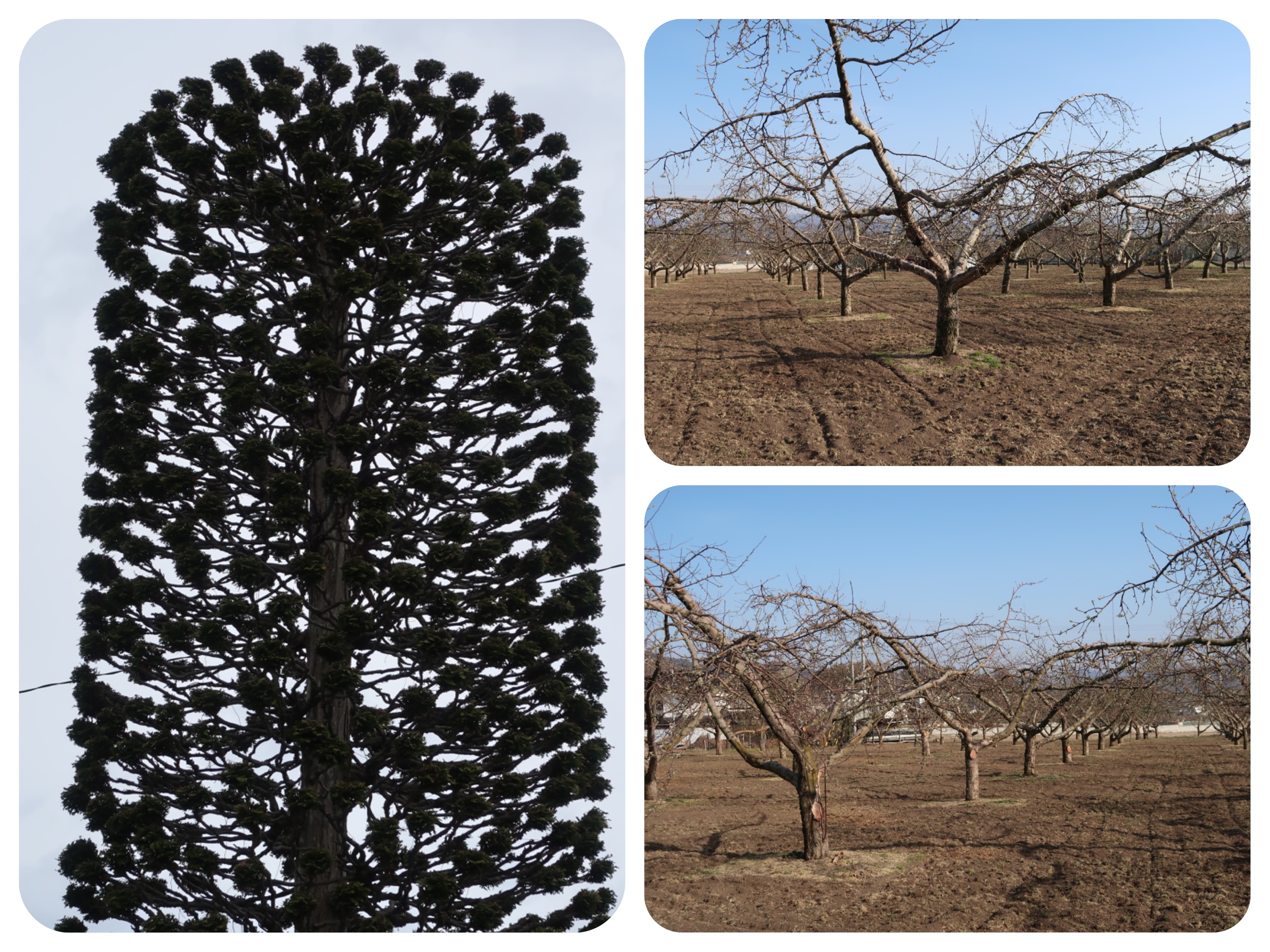
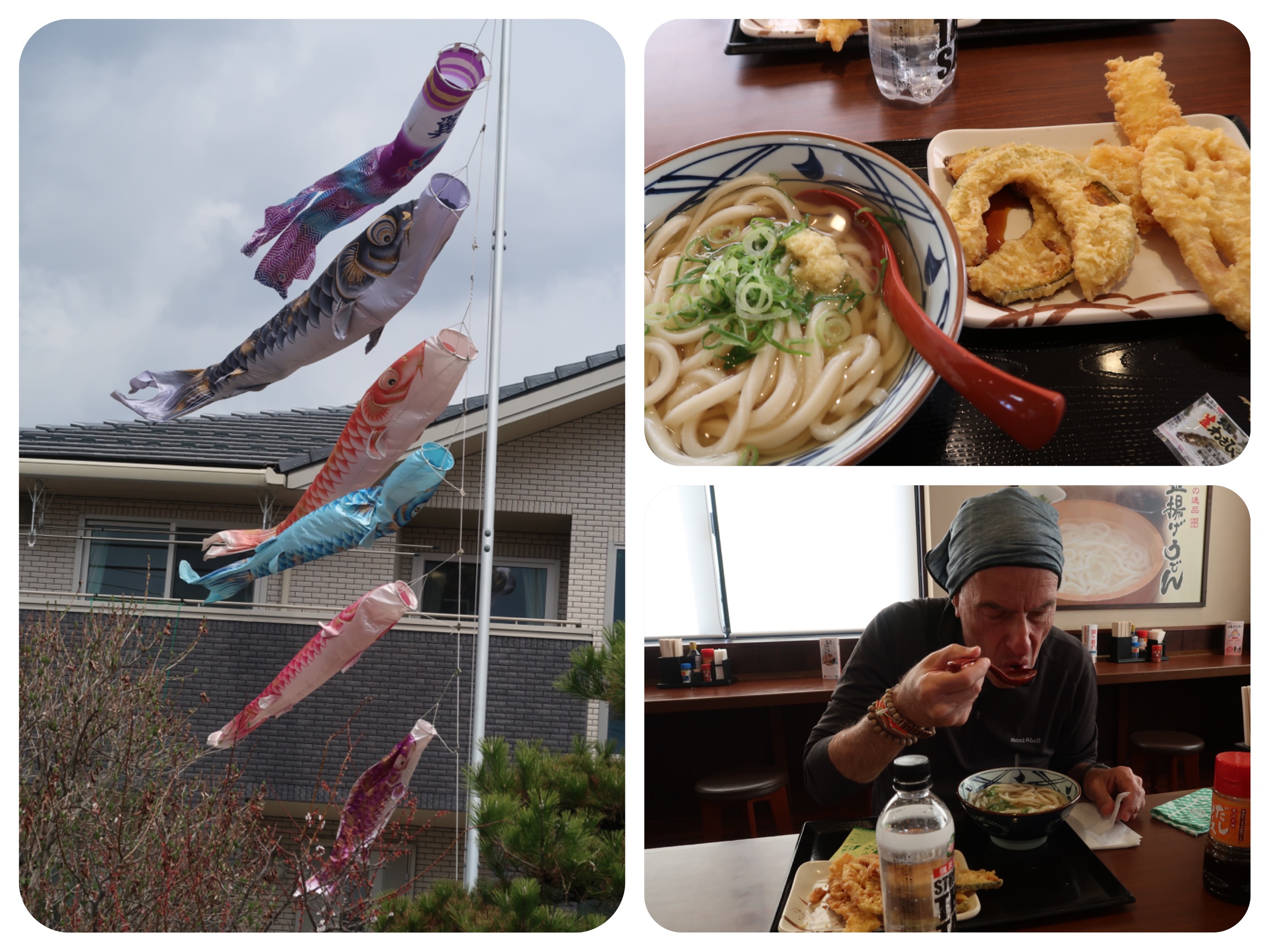
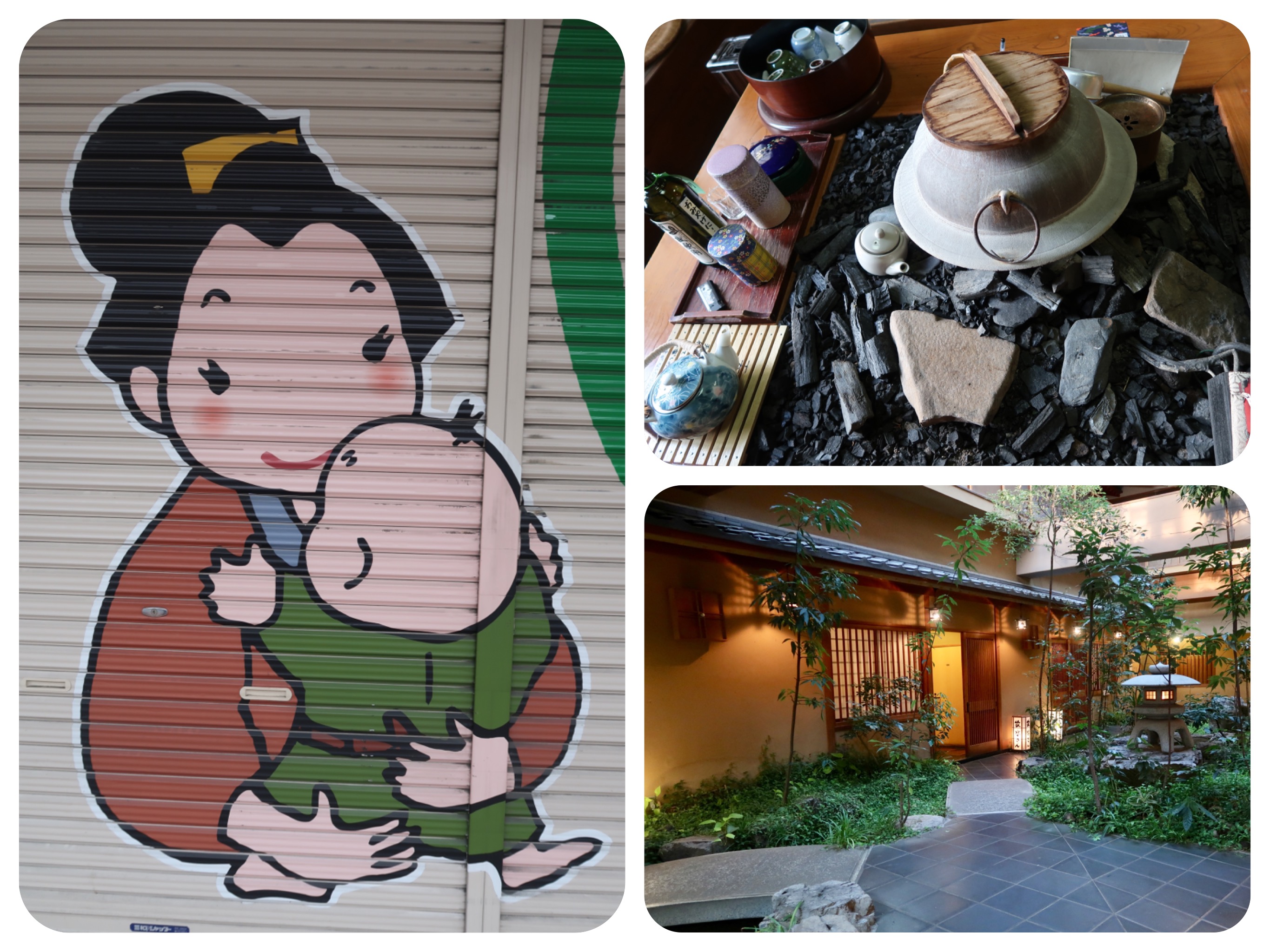
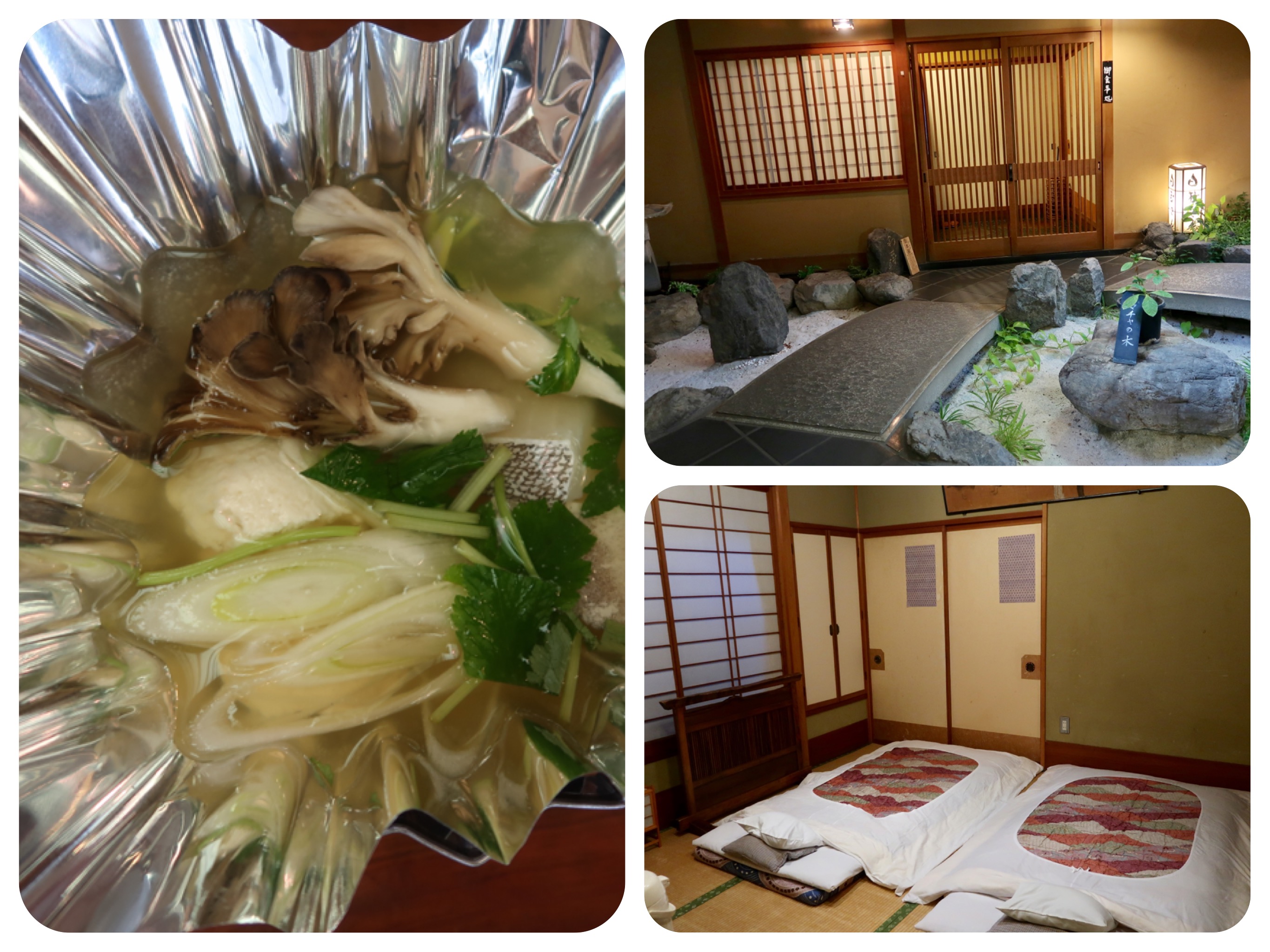
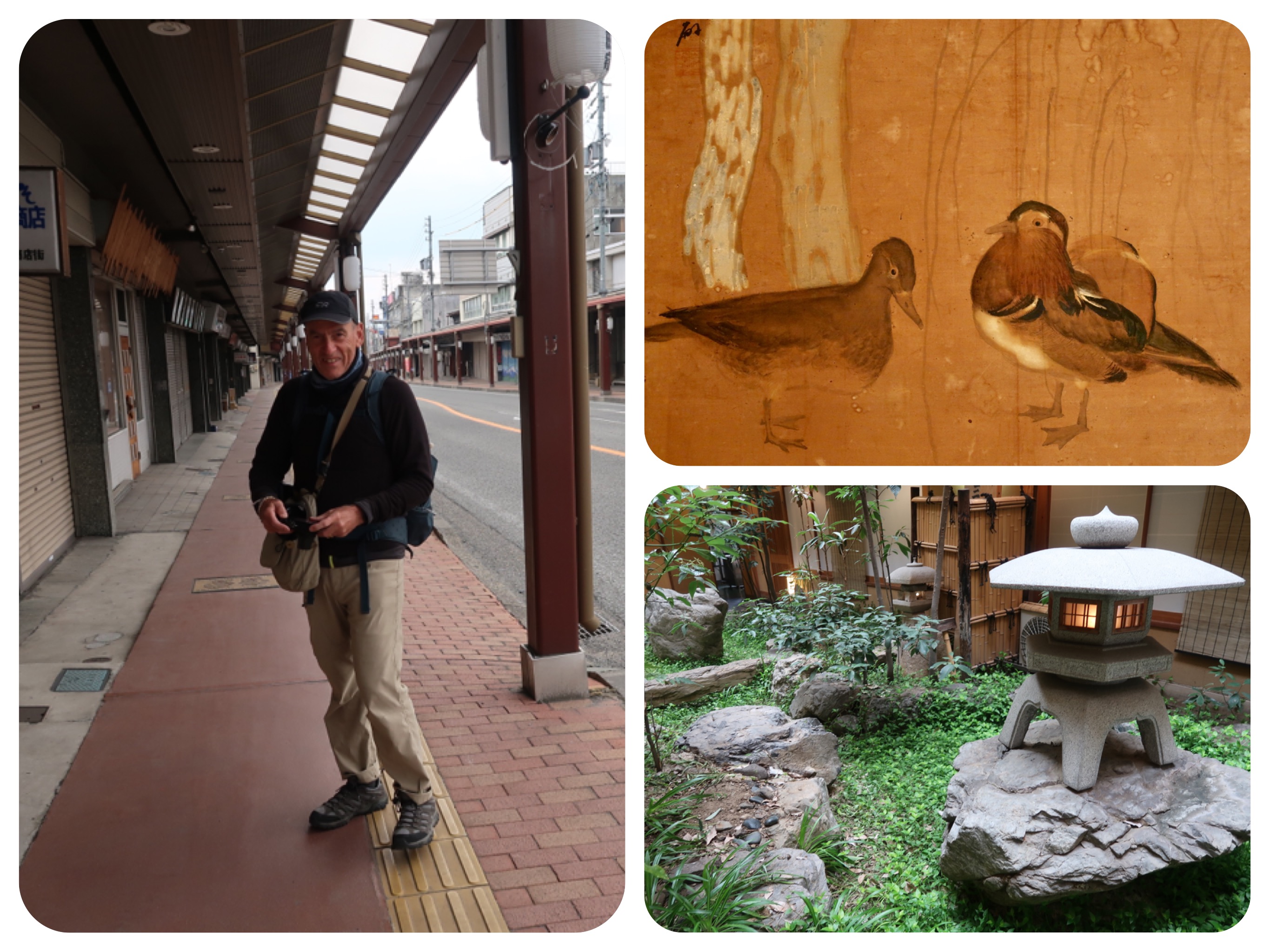
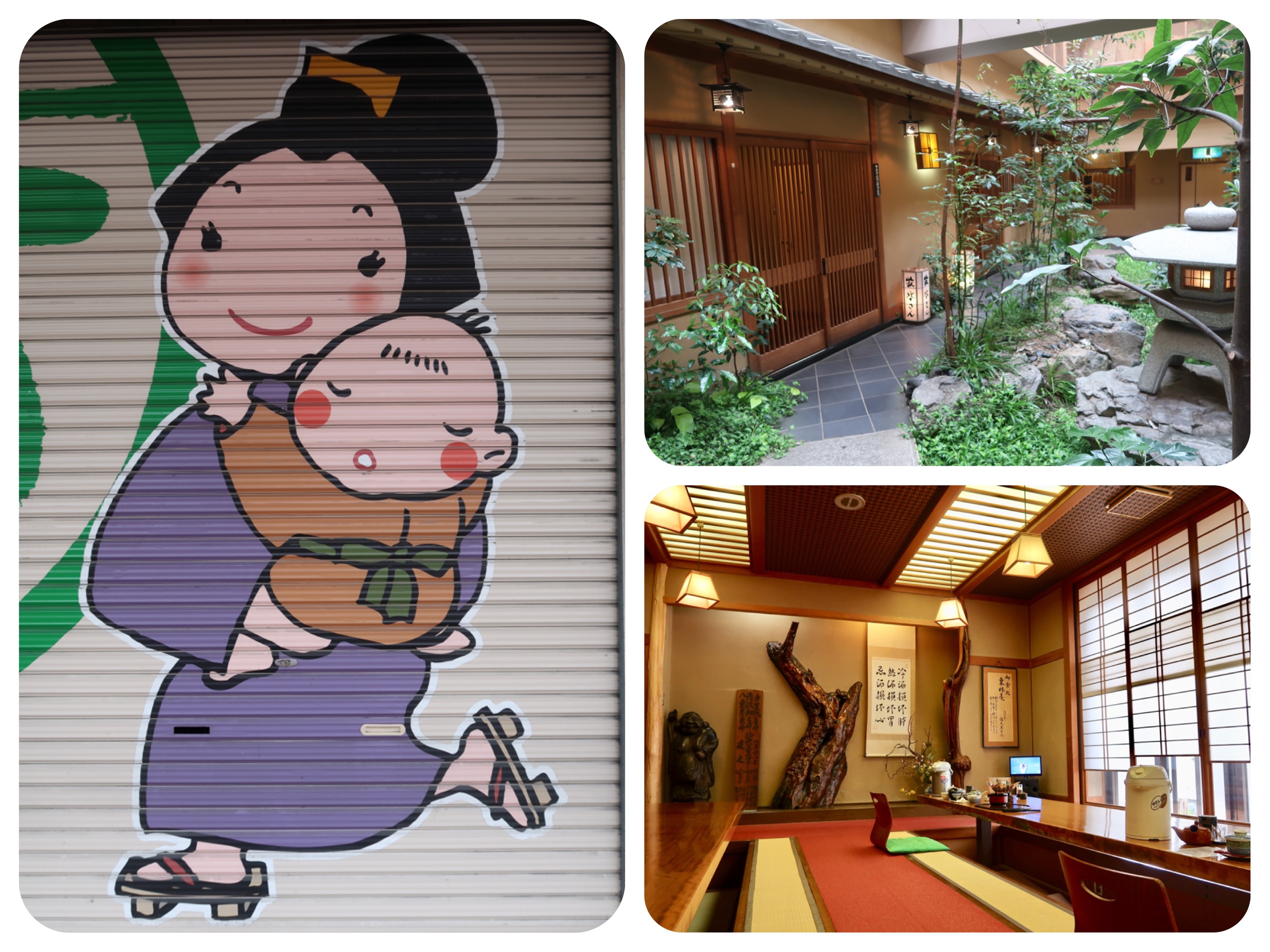
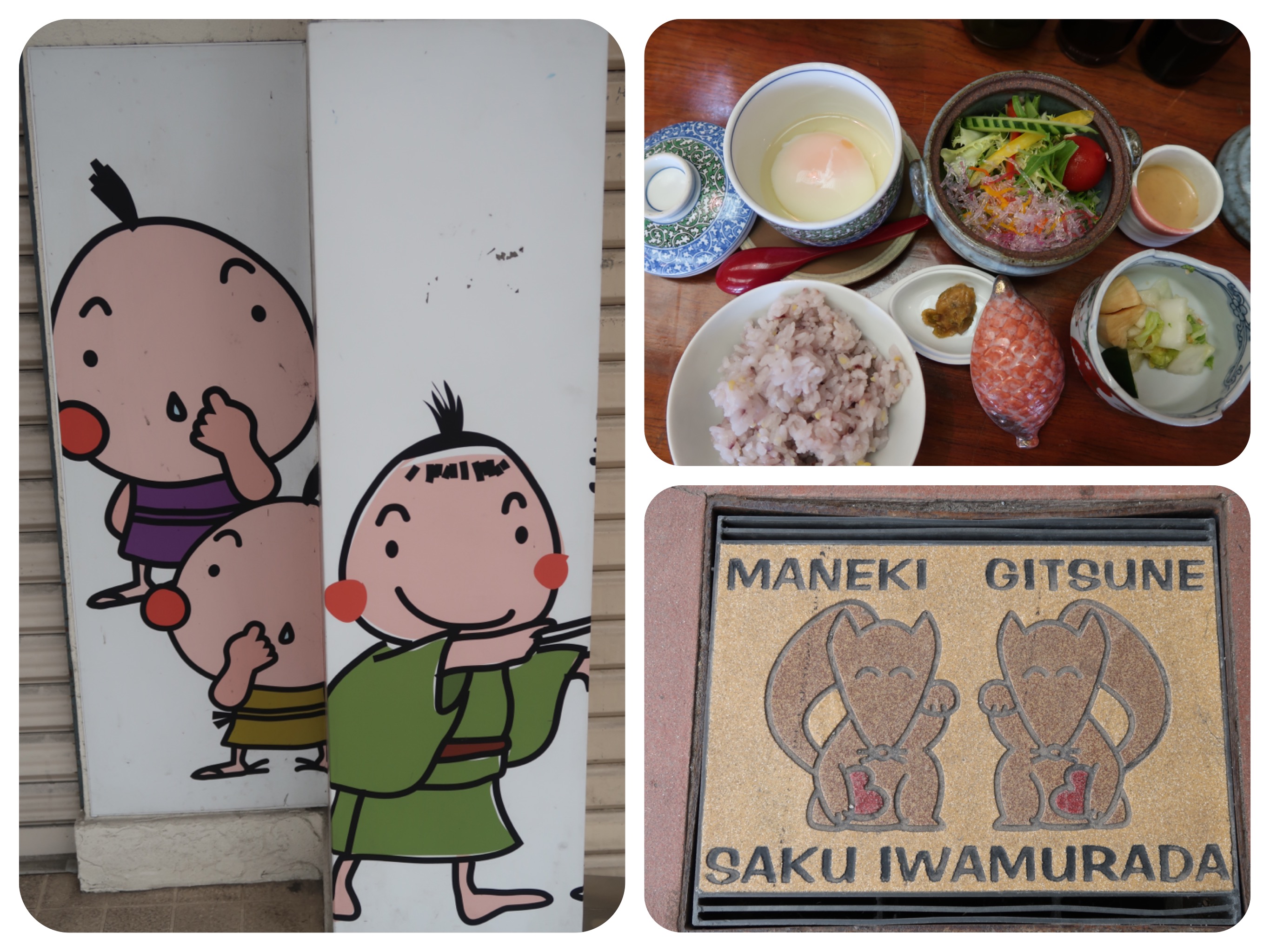
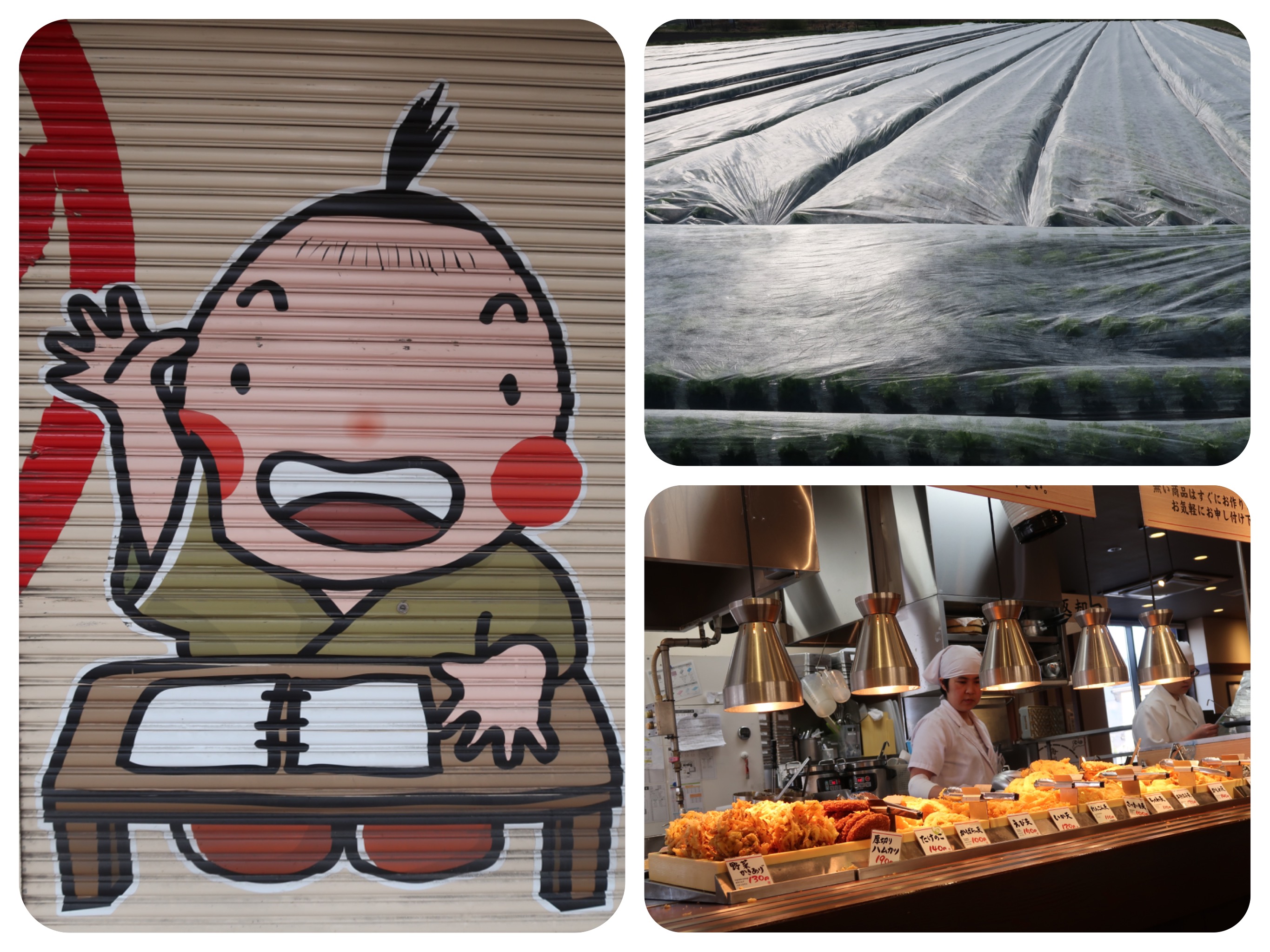
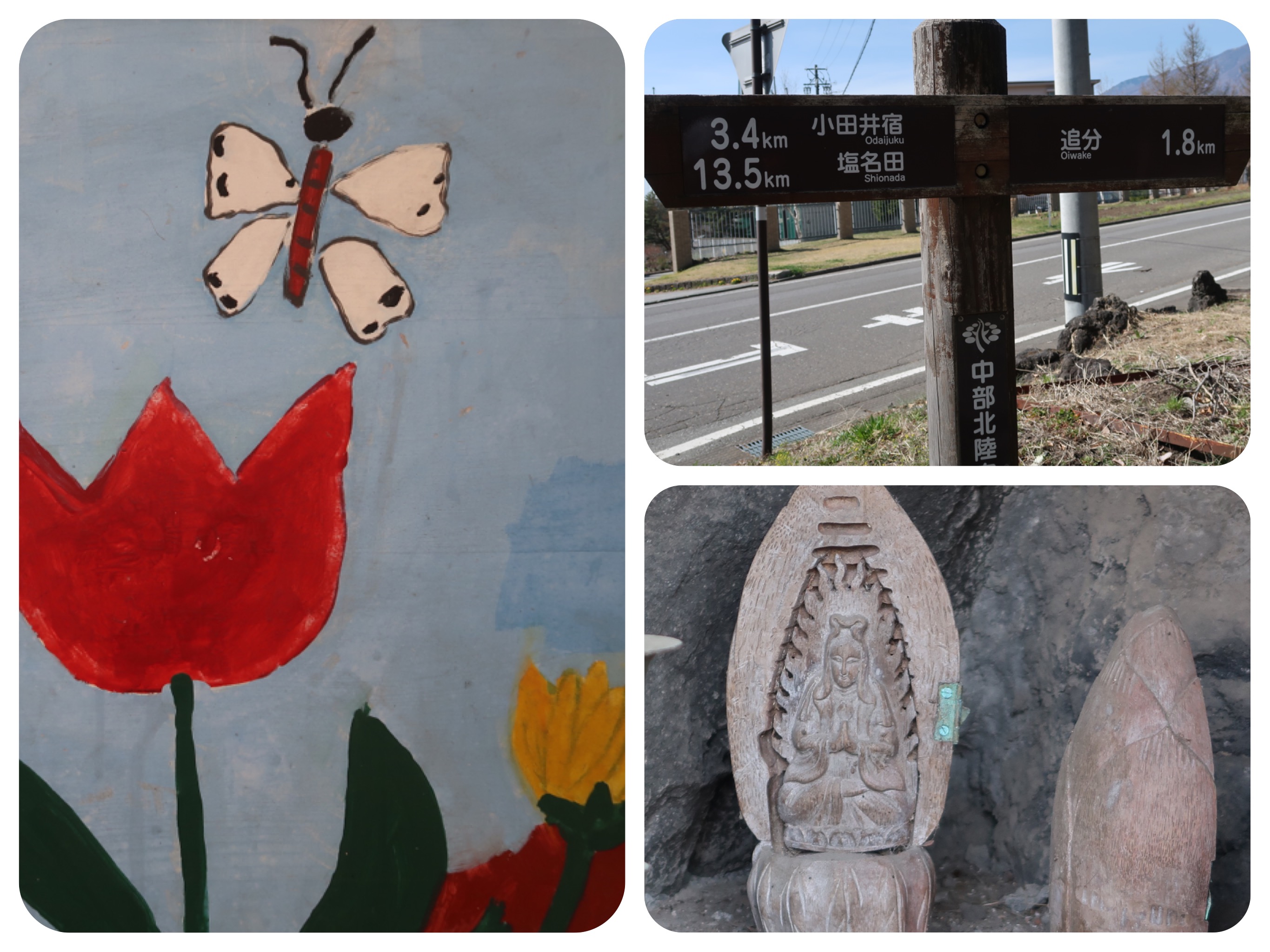
Day 10 - Walking The Nakasendō, Japan - old station towns, and thoughts that crossed my mind
This morning we ate breakfast early.
Breakfast was “Western Style,” which means a toast, a croissant, egg salad and an egg omelet, yogurt, an orange juice and tea.
It wasn’t as good as a Japanese breakfast, but pilgrims are not picky.
Any hot warm food that is freshly made is eaten with appreciation.
We dressed up using all our layers, including fleeces, gloves and warm hats, and started walking west out of Karuizawa.
We had hoped to enjoy a hot drink in the Starbucks at the Prince Outlet Mall, but they were not open until 9:30 am, and we started walking by 8:30.
The road was a slow descent through small villages and old post towns.
Most everything was closed.
Initially I thought things were closed because it was early morning, but when places stayed closed at noontime, we realized that perhaps the season starts in May when it is a bit warmer, and lasts until the snow starts falling in late November or mid December.
The Museum of the Nakasendo was closed, the small galleries and cafes were all closed, but we did enjoy the old architecture and the spacious feeling of the old post towns.
The truth is, that even if everything were open, we would not have had time to visit much, if anything, because we are trying to complete the entire Nakasendō in about 30 days.
We even took a detour from the path, to look for a small cafe in the forest, but it was also closed.
We walked back to the Nakasendo trail and continued on.
We had walked for four hours without a rest, when we finally came upon a small bakery and cafe that was open.
The friendly owner served us a lunch of a vegetable salad, a hearty vegetable soup, and freshly baked bread.
The set included her freshly ground brewed coffee.
We sat and rested in her warm and pleasant cafe.
Before leaving, we bought some of her delicious wholesome breads to take with us.
We have two long days of walking ahead of us, and if very few places are open, we can at least eat her bread for lunch and dinner.
The weather had warmed up significantly and the path was a gradual descent.
We took off some of our layers of clothing.
I thought of the hikers we had met in the woods, from Washington State.
The men looked so tall, powerful and strong, and the women, while not so tall, also looked strong in spirit, mind and body.
There was another group of about twenty American people whom we saw coming into Karuizawa on our rest day.
They also were strong, and their stride and energies exhibited enthusiasm and power.
I was thinking how much I love the spirit of my countrymen, the American people.
The ones who live in the western Nature States, love the outdoors and adore Nature.
They are thirsty for knowledge, admire other cultures and love adventures.
As a result of all this, they are very capable.
Jules said that he thinks that it is very adventurous to take active vacations like hiking mountains in Japan, and that he admires them for that.
Most people just want to lay on the beach and relax.
Here you have strong people who come to hike forests and mountain passes, challenging themselves to new adventures on their vacations.
By the world’s standards, they are all rich, with enough money saved or earned to afford them such wonderful adventures.
They also have that admirable “Can Do!” attitude, which is a wonderful way to go through life.
We continued walking through more small towns until we reached Saku, our destination for tonight.
We had booked a room in an onsen Ryokan hotel in Saku, trying to avoid staying in one of the business hotels in town.
We booked the room with breakfast, but without dinner, thinking we would eat something along the way.
Right before we reached the hotel, we spotted a large Udon noodle restaurant.
They were making the noodles by hand in the middle of the restaurant, and they had comfortable seating.
We took off our backpacks and ate dinner there.
You first had to select what kind of Udon you wanted.
I selected plain noodles in a clear soup.
Then you had to choose the size of the Udon bowl you wanted.
A normal bowl, a one and a half portion or a double portion.
Then you can choose what kind of tempura to add to your Udon.
I chose some Kabocha pumpkin, a Renkon lotus root, shrimp, sweet potato and white fish.
The dinner was simple but very good, and afterwards, we proceeded on to our hotel.
The SakuSaku Ryokan (showing up on Google maps as the Saku hotel) is a mixture of a hotel and a Ryokan (traditional Guesthouse).
The western style room that we were first shown was horrendous.
Luckily they did have a Japanese Style Tatami mat room available for us to switch to.
The Japanese Style rooms are located around a nice indoor Japanese garden with a water feature and stone bridges.
The rooms have wooden sliding shoji doors and a toilet.
The showers and the sinks are all shared.
We sat in the lobby around the fire, until they prepared the room for us.
The fire had some hot water boiling in the middle, and a ladle to pour the hot water into your tea pot.
I drank copious amount of green tea until our room was ready.
After a long day of walking, I find hot green tea to be very soothing.
We got a lovely large room with futons on the floor, yukatas (summer kimonos) towels and toothbrushes.
At the ceiling light, there was a tree that resembled Mount Fuji-San.
We were shown to the small hot spring bath, which was very reviving after the cold day of walking outdoors.
I babied my feet and rubbed them with cream.
The owner allowed us to do our laundry in the hotel’s washing machines for free, and suggested that since she does not have a drier, we hang our clothing all over the room.
We did so and everything dried perfectly overnight.
The owner also had a lovely art collection of landscape paintings which I enjoyed seeing.
Jules added some Information about the Station towns we passed:
Karuizawa, Station #18
Karuisawa-shuku is located at the western entrance to the Usui Pass. It flourished more than any other post town along the Nakasendō, with five honjin and sub-honjin, in addition to over 100 other structures for travelers.
During the Edo period, the post town also employed hundreds of Meshimori Onna (飯盛女), women who were employed by the Shōgun to serve food to travelers and who sometimes worked as sex workers.
To the east of the post town, a bridge crossed over the Yakazaki River, where travelers reluctantly parted with the Meshimori Onna.
From the Meiji period onwards, Karuisawa became a popular place with Western missionaries.
It was at this point that the area's name changed from "Karuisawa" to the modern "Karuizawa," which is easier for foreigners to pronounce.
Because there was a large number of foreigners in the area, many western-styled structures were also built, which has resulted in few structures from the past remaining today.
Kutsukake-shuku (Kutsukake-shuku) #19
This post town's name, which roughly translates to "Stuck Shoes," came about because it was located near the western entrance to the difficult Usui Pass.
When there was severe weather, it was impossible for people or animals to cross the pass.
Oiwake-Shuku, #20
This post town was named Oiwake, which means "Where two roads split," because it was at this point that the Nakasendō split from the Hokkoku Kaidō.
In the late 17th century, during the Genroku period, it flourished as a post town that could hold over 200 guests.
There are still many remnants from the Edo period in the town today.
Oiwake is about twelve kilometers west of Karuizawa, and we reached it by the afternoon.
It has a beautiful Main Street, with many monuments to poets, parks, and shrines.
We saw a man reading Basho’s haikus by the creek in front of the monument to Basho.
Station #21 - Otai-shuku,
Located in the town of Miyota.
Otai-shuku originated between 473 and 492 AD and developed into a post town over one thousand years later, during the Keichō era.
Because Otai-shuku was small there were only five rest areas in the entire post town, daimyōs tended to stay at the neighboring Oiwake-shuku, which was much larger.
The town holds an annual festival to commemorate the 400th anniversary of the founding of the post town every August 16 of each year.
Station #22 - Iwamurada-shuku,
Located in the town of Saku.
Our Ryokan for the night, SakuSaku, was a beautiful old building with a hot springs bath, traditional Japanese rooms, and a long history.
It is located on the outskirts of town, and we reached it after walking through an area dominated by used car dealerships, making its appearance even more surprising.
Day 10- Stats:
Total walking time 8 hours
Active walking time 6 hours
Total steps: 33,340 steps
Daily Kilometers 24.5 Kilometers
Total Kilometers walked up to date: 241.5 Kilometers
Total elevation climbed 1,482 meters
Total descent 1,700 meters
Maximum Altitude reached 1,008 meters
Accommodation: SakuSaku Ryokan (Saku Hotel) with great Japanese Style room, a small O’furu bath and a great breakfast
Station Towns visited in Nagano Prefecture:
18. Karuisawa-shuku (Karuizawa, Kitasaku District)
19. Kutsukake-shuku (Karuizawa, Kitasaku District)
20. Oiwake-shuku (Karuizawa, Kitasaku District)
21. Otai-shuku (Miyota, Kitasaku District)
22. Iwamurada-shuku (Saku)
